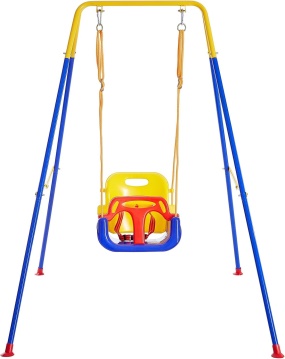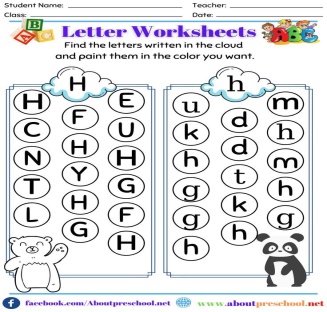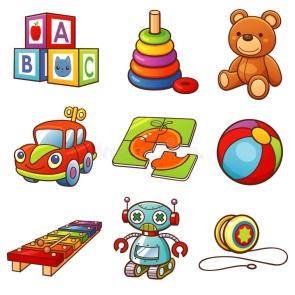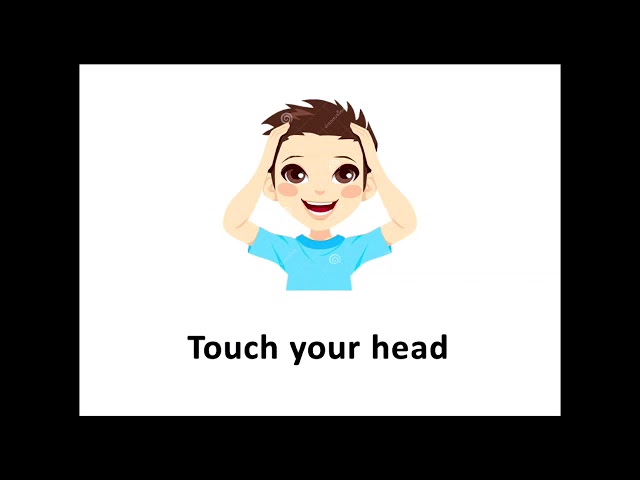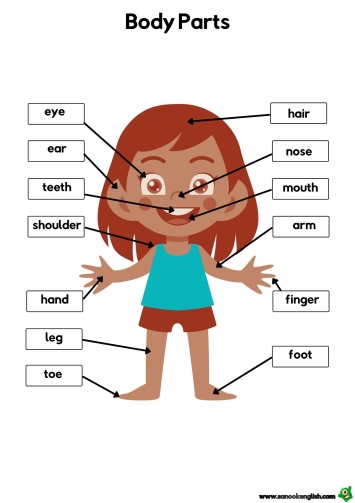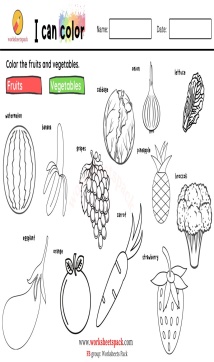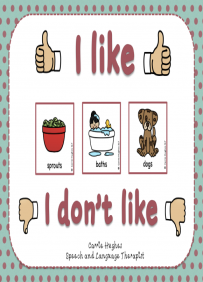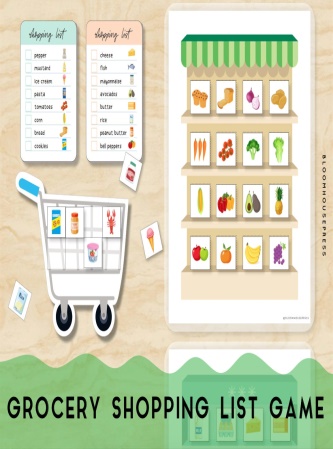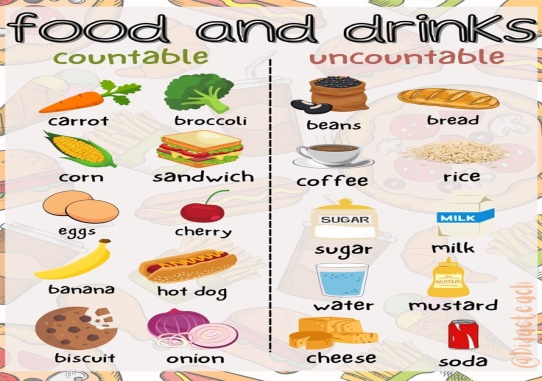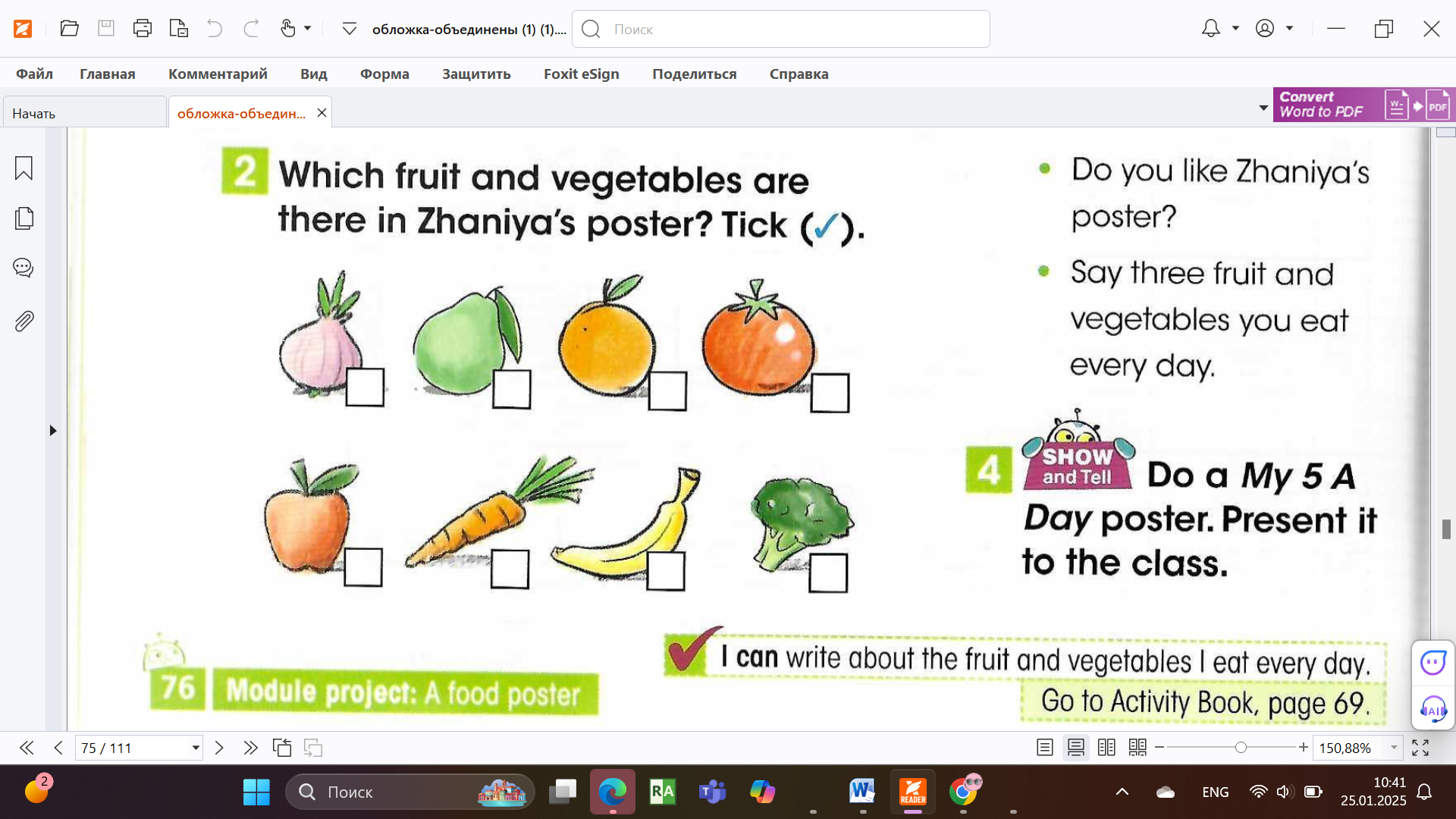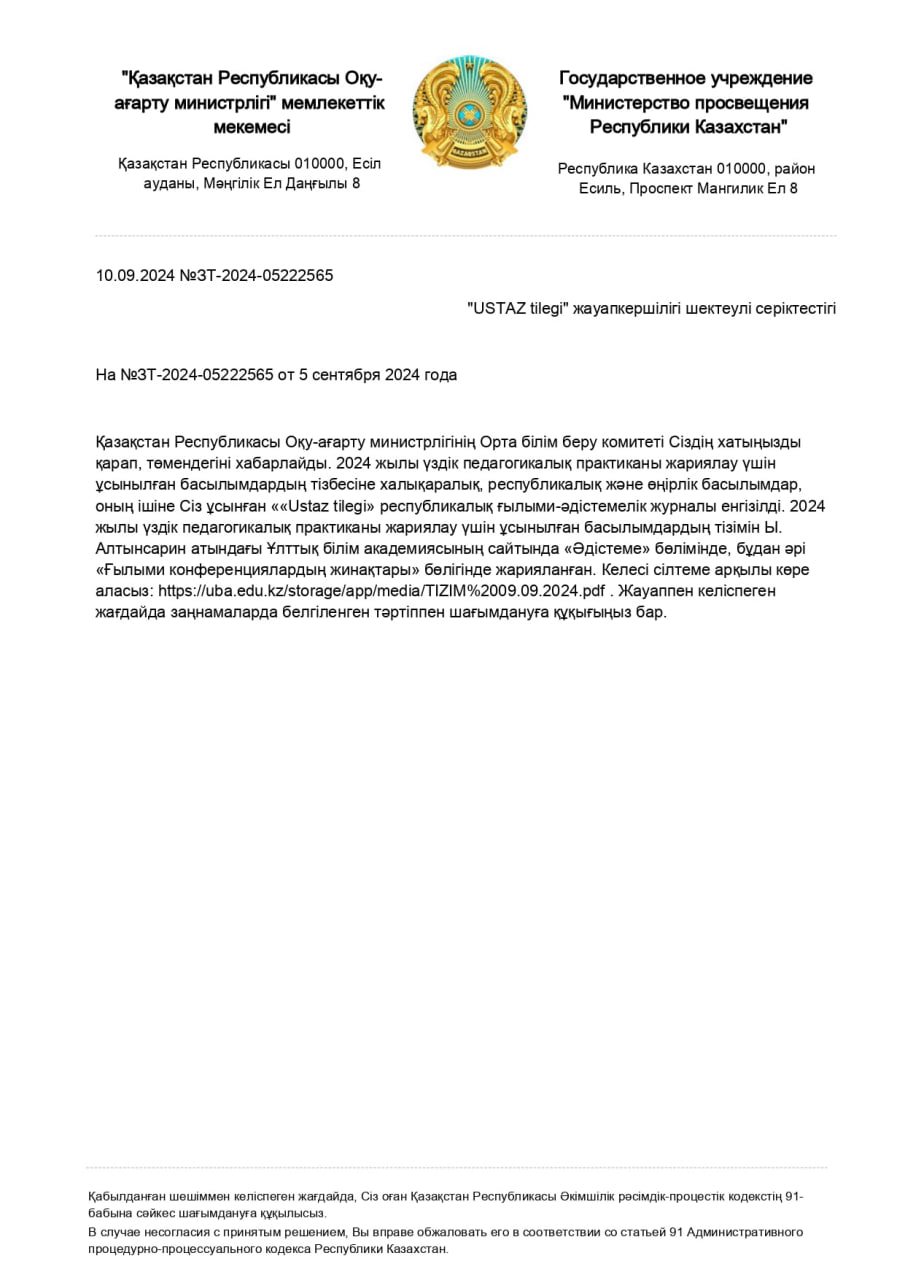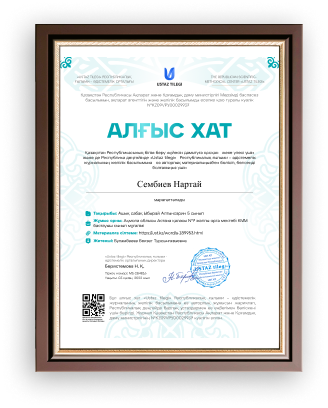
Short term plan
|
Unit: Unit 5. My free time |
Lesson 33 |
||
|
School: |
|
||
|
Teacher’s name: |
|
||
|
Date: |
|
||
|
Grade: 3 |
Number present: |
absent: |
|
|
Lesson title |
I can do this! |
||
|
Learning objectives |
3.1.2.1 recognise familiar words with visual support; 3.2.2.1 use isolated words and basic expressions to provide personal information 3.2.3.1 respond to basic questions with single words or short responses; 3.5.1.16 use let’s + verb, verbs go/like + verb + ing |
||
|
Lesson objectives (assessment criteria) |
Learners will be able to: - recognise familiar words with visual support; - respond to basic questions with single words or short responses; - make basic requests related to immediate personal needs; to use can/can’t to describe ability; |
||
|
Values and its purpose: |
"Law and Order" Know the basics of the legal system and human rights |
||
|
Stages/ Time |
Teachers actions |
Students actions |
Assessment |
Resources |
|
Beginning of the lesson 5 min |
Organization moment : 1.Greeting. . (Whale class, Individually) Warm-up Phonetic Drill Exercise. Ask the pupils to look at the picture on p. 56 and tell you what they can see, in L1 if necessary. Point to the title of the module and say: My Free Time. Ask: Where do you go in your free time? Do you go to the park? Do you go to the playground? Elicit responses from pupils and have a class discussion, in L1 if necessary. Ask the pupils to tell you what they usually do in their free time. Elicit responses from around the class. Lead – In
|
Greet the teacher and classmates. Introduce themselves in pairs. Sts. listen to the song and name a topic of the lesson. https://youtu.be/YywiAe4kWJ4 Sts. name a verb and make up sentences with a modal verb can. Sts. answer: Yes/ No and give a full sentence. |
Teacher controles the process, gives feedback and asks additional questions if it’s nessasery. Teacher evaluate pupils with phrases like: “Good job! Well done!” Formative Assessment
|
|
|
Middle of the lesson Presentation part. 35 min |
Task. I Ex:1 P:57 Ask: What’s your favourite activity? Explain the meaning, in L1 if necessary. Have a discussion about which activities the pupils like, and which activities they think are most popular with boys and which with girls. Ask: Can girls climb? Can boys dance? etc Have them say if they think girls can do boy- oriented activities (e.g. football) and if boys can do activities associated with girls (e.g. dance). |
Learners listen and point to the pictures. The pupils listen, point to and repeat the actions, chorally and/or individually. Transcript run, fly, walk, talk, ride a bike, ride a scooter walk, run, ride a scooter, talk, ride a bike, fly Listen and repeat. run, fly, walk, talk, ride a bike, ride a scooter |
T’s feedback Descriptor: - look at the family members - match descriptions to pictures Point 2
|
Free time activity flashcards
|
|
|
Task. II Ex: 2 P: 57 Say and write on the board: I can run. You can run. The pupils repeat after you. Explain that we use can to talk about what we can/can’t do. Underline the words in bold. Say and write on the board: He can run. She can run. The pupils repeat after you. Underline the words in bold. Elicit from the pupils that can is the same in all persons. Follow the same procedure and present the negative and interrogative forms. Explain that cannot should always be written as one word and the short form is can’t |
Learners listen to the chant and say the words. Transcript Teacher: you/dance Pupil 1: You can dance. Teacher: he/swim? No. Pupil 2: Can he swim? No, he can’t. etc |
Self -assessment Descriptor: - listen to the chant. - add actions for each family Point 2
|
https://wordwall.net/ru/resource/1624332 |
|
|
Task. III Ex: 3 P: 57 Play the Who am I? game To practise talking about ability through a game. Divide the class into two teams, A and B. Explain the game. Choose a child from Ex. 2 and say what you can do. In teams, the pupils guess who you are. Alternatively, a pupil from each team takes your role. |
Learners Teacher: I can draw. Who am I? Team A,Pupil 1:Aidar! Teacher: No, I’m not. I can dance and I can climb, too! Who am I? Team B, Pupil 1: kbota! Teacher: Yes, I am! |
Descriptor: - listen to the recording - answer the question |
Worksheet
|
|
|
||||
|
End of the lesson 5 min |
Briefly ask students what they learned today (greetings, names of characters, introducing themselves). Ex: P: Home task: |
Pupils evaluate themselves using evaluation lists. Reflection. Self- Assessment. |
Poster Success
|
|
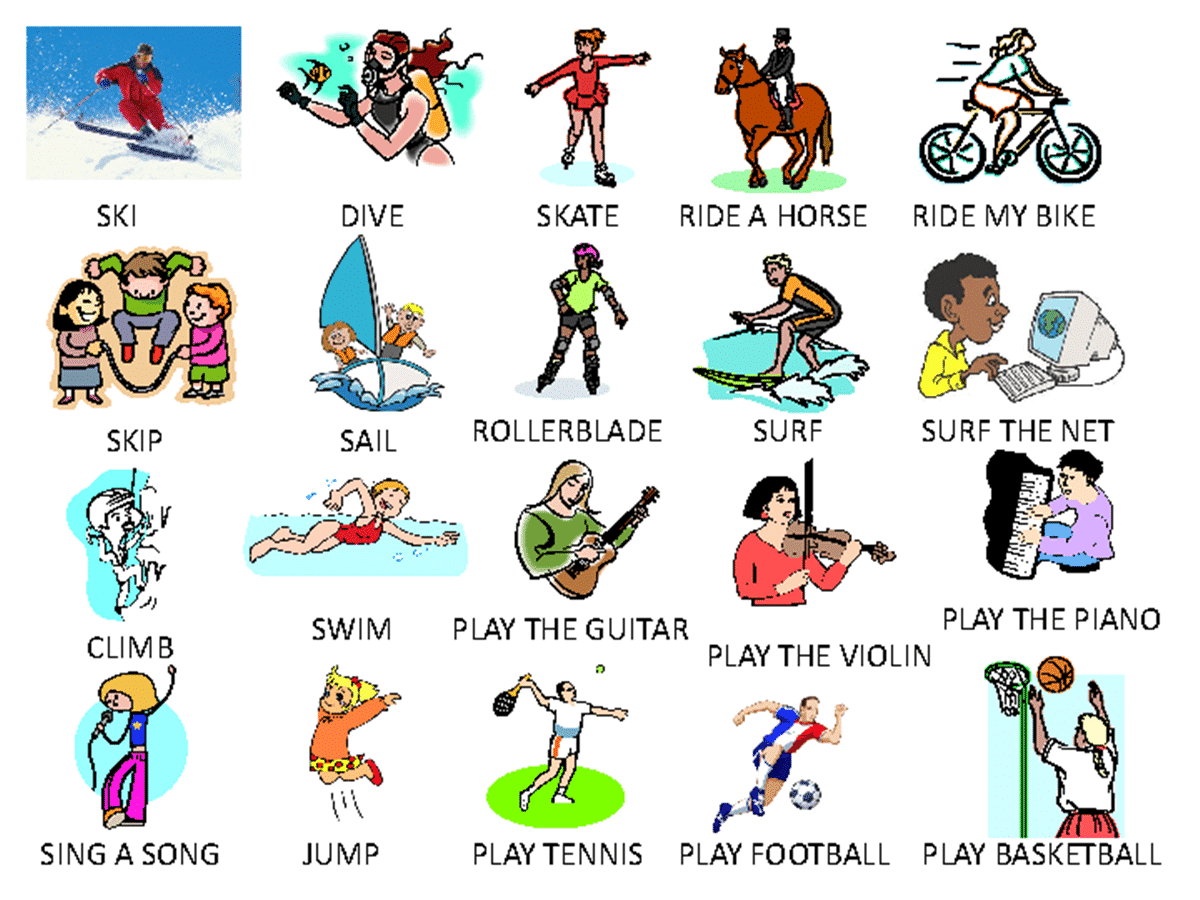
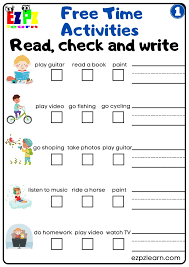
Short term plan
|
Unit: 5. My free time |
Lesson 34 |
||
|
School: |
|
||
|
Teacher’s name: |
|
||
|
Date: |
|
||
|
Grade: 3 |
Number present: |
absent: |
|
|
Lesson title |
My Toys and Sport. I like ... |
||
|
Learning objectives |
3.1.4.1 understand basic personal questions; 3.2.3.1 respond to basic questions with single words or short responses; 3.3.3.2 find out the main points in short simple descriptions with visual support; 3.5.1.13 use can/ can’t to describe ability. |
||
|
Lesson objectives (assessment criteria) |
Learners will be able to: - identify and describe toys and games; - recognise familiar words with visual support. |
||
|
Values and its purpose: |
"Law and Order" Observance of norms and rules of order and justice understand the need |
||
|
Stages/ Time |
Teachers actions |
Students actions |
Assessment |
Resources |
|
Beginning of the lesson 5 min |
Organization moment : 1.Greeting. . (Whale class, Individually) Warm-up To revise the language of the previous lesson. Play Simon Says. The pupils follow the commands only if they are preceded by Simon Says. Pupils are out of the game if they follow a command that’s not preceded by the phrase Simon says.
|
Learners identify characters and potentially share details from the previous lesson. . |
Teacher controles the process, gives feedback and asks additional questions if it’s nessasery. Teacher evaluate pupils with phrases like: “Good job! Well done!” Formative Assessment
|
Flashcards
|
|
Middle of the lesson Presentation part. 35 min |
Task. I Ex:1 P: 58 Introduce toys and games; To talk about soft and hard toys. Point to the teddy bear and say, as you mime squeezing it: It’s soft. The pupils repeat after you. Point to the train and say, as you mime not being able to squeeze it: It’s hard. The pupils repeat after you. Then ask individual pupils to come to the board and point to the soft and hard toys. Play the audio. Play the audio a second time, pausing after each word(s). |
Learners listen, point to and repeat the toys and games, chorally and/or individually. Time permitting, ask individual pupils to point to and say the items |
Descriptor: - listen, point to and repeat - talk about soft and hard toys
|
worksheet
|
|
|
Task II Ex: 2 P: 58 Practise toys and games through a song. Elicit the toys. Play the audio, twice if necessary. Present the song. Gesture with your hand and say: Come and play, girls and boys, come and play with all the toys! The pupils repeat after you. Follow the same procedure and present the rest of the song. If you wish, play the animated video for the pupils to watch. |
Pupils listen and circle the toys they hear. The pupils sing along. |
T’s feedback Descriptor: - listen and circle the toys Total: 1 point
|
|
|
|
Talk about metal/plastic toys and games with/without wheels Point to the scooter and say: It’s a metal toy. Point to the wheels of the scooter and say: It’s got wheels. Then ask individual pupils to point and say which toys have got wheels, which are metal and which are plastic. |
Answer key: Toys with wheels: train, car, scooter Metal toys: robot, scooter Plastic toys: toy bricks |
|
|
|
|
Task. III Ex: 3 P: 33 Draw children's attention to the pictures. Read each word aloud for children to repeat chorally. Pair up children. Ask them to close their books. Explain that they will take turns to mime each word for their partner to guess. Do an example with the class e.g. mime putting on knee pads for children to call out the word. |
Learners listen and circle the toys they hear. The pupils sing along. |
Self -assessment Descriptor: - listen and circle the toys - repeat chorally. Point 2 |
|
|
|
||||
|
End of the lesson 5 min |
Encourage students to practice writing their names and greeting their families in English. |
Pupils evaluate themselves using evaluation lists. Reflection. Self- Assessment. |
Poster Success
|
|
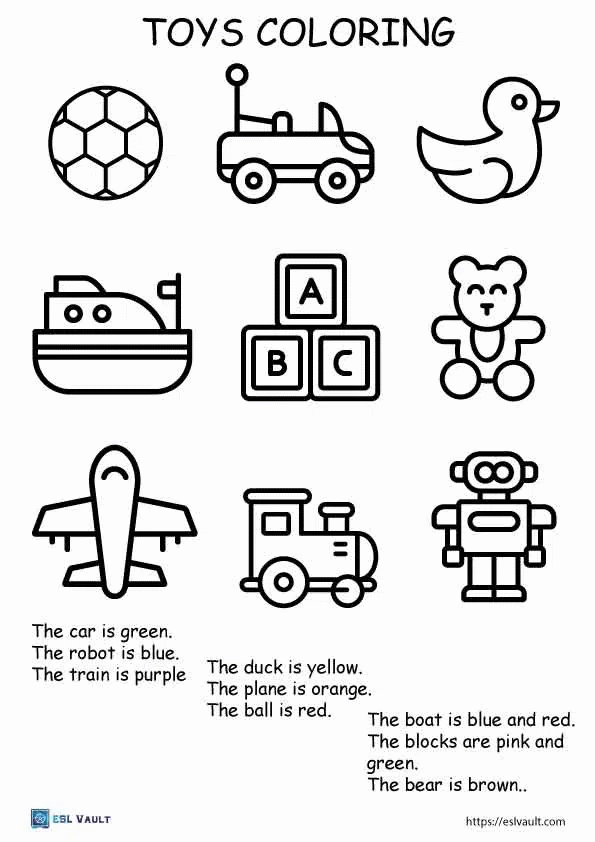
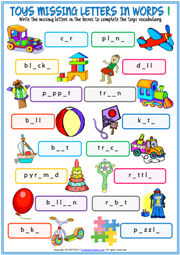
Short term plan
|
Unit 5. My free time |
Lesson 35 |
||
|
School: |
|
||
|
Teacher’s name: |
|
||
|
Date: |
|
||
|
Grade: 3 |
Number present: |
absent: |
|
|
Lesson title |
Imperative forms(commands/ suggestions). |
||
|
Learning objectives |
3.1.4.2 understand simple descriptions of people, actions, and objects with visual support; 3.2.2.1 use isolated words and basic expressions to provide personal information; 3.3.3.2 find out the main points in short simple descriptions with visual support; 3.5.1.13 use can/ can’t to describe ability. |
||
|
Lesson objectives (assessment criteria) |
Learners will be able to: - make suggestions; - understand basic personal questions; - use imperative forms to give short instructions on a limited range of familiar topics; to use Let’s + verb. |
||
|
Values and its purpose: |
"Law and Order" Ensuring the protection and safety of society understand the importance of law and order as |
||
|
Stages/ Time |
Teachers actions |
Students actions |
Assessment |
Resources |
|
Beginning of the lesson 5 min |
Organization moment : 1.Greeting. . (Whale class, Individually) Warm-up Ask a pupil to come to the board. Name a toy/game from the previous lesson. The pupil draws a rough sketch of the toy/game on the board. Ask the rest of the class for verification. Repeat the activity with other pupils.
Let’s play the piano |
Learners work in pairs. One pupil thinks of a free time activity and the other pupil tries to guess the activity. Watch the video and remember and recognize the main vocabulary. |
Teacher controles the process, gives feedback and asks additional questions if it’s nessasery. Teacher evaluate pupils with phrases like: “Good job! Well done!” Formative Assessment |
|
|
Middle of the lesson Presentation part. 35 min |
Task. I Ex: 1 P:59 Present the imperative and Let’s + verb. Book closed. Say, as you write on the board: Let’s go to the park. Underline the words in bold. The pupils repeat after you. Elicit the meaning and the use of Let’s. Explain that we use it when we want to make a suggestion. Then write: Open your books! Don’t be late! Underline the words in bold. The pupils repeat after you. Explain that this is how we give commands to someone in the affirmative and negative.
|
Learners repeat after the teacher Let’s make a house! Get the toy bricks! Don’t be late! |
T’s feedback Descriptor: listen, point, and repeat Total: 1 point |
Flashcards
|
|
|
Task II Ex: 2 P: 59 Practise making and accepting suggestions. Read the example and explain the activity. The pupils practise making and accepting suggestions about what to do in their free time. Go around the classroom providing any necessary help. Ask some pairs to come to the front of the classroom and act out their dialogue. |
Learners act out the dialogue |
T’s feedback Self assessment Descriptor: - making and accepting suggestions - act out the dialogue Total: 1 point |
|
|
|
||||
|
End of the lesson 5 min |
Briefly ask students what they learned about emotions today. |
Pupils evaluate themselves using evaluation lists. Reflection. Self- Assessment.
|
Poster Success
|
|
Short term plan
|
Unit: 5. My free time |
Lesson 36 |
||
|
School: |
|
||
|
Teacher’s name: |
|
||
|
Date: |
|
||
|
Grade: 3 |
Number present: |
absent: |
|
|
Lesson title |
Toys Everywhere! |
||
|
Learning objectives |
3.1.1.1 recognise the sounds of phonemes and phoneme blends in words; 3.2.3.3 make introductions and requests in basic interaction with others; 3.3.2.1 identify some familiar words and signs on illustrations /pictures in common everyday situations; 3.4.2.1. follow word order rules in short statements. |
||
|
Lesson objectives (assessment criteria) |
Learners will be able to: - listen to and read a story about the characters’ toys; - make a toy box and play a game; - develop listening comprehension skills through a story; - understand short, simple instructions used in familiar everyday contexts; |
||
|
Values and its purpose: |
"Law and Order" Know the basics of the legal system and human rights |
||
|
Stages/ Time |
Teachers actions |
Students actions |
Assessment |
Resources |
|
Beginning of the lesson 5 min Middle of the lesson Presentation part. 35 min |
Organization moment : 1.Greeting. . (Whale class, Individually) Warm-up Revise the language of the previous lesson. The pupils play in pairs or groups. One pupil gives a command for the other(s) to follow, but only if it is by the word please, as in the example. Then they swap roles and the activity continues. Task. I Ex:1 P:60 Present the Toys Everywhere! story. Read the title and elicit its meaning. Ask: What is the story about? Let’s find out! Go through the pictures and set the scene. Follow the same procedure and present the rest of the story. Play the audio. The pupils listen and follow in their books. Ask: What are the hard toys in the |
Students Pupil 1: Play the guitar, please. Pupil 2: (mimes playing the guitar) Don’t draw a car. Pupil 1: (stays still) etc Teacher: (pointing to Carlos in picture 1) Who’s this? Class: Carlos. Teacher: (pointing to Cody) Who’s this? Class: Cody. Teacher: Yes. They’re in the garden. They want to play. |
Teacher controles the process, gives feedback and asks additional questions if it’s nessasery. Teacher evaluate pupils with phrases like: “Good job! Well done!” Formative Assessment Descriptor: - - answer the question Total: 2 point |
|
|
|
story? Write robot, car, teddy bear on the board. Play the audio again. The pupils listen and answer (robot, car). Time permitting, play the audio a third time with pauses for Check their pronunciation and intonation. If you wish, play the animated video for the pupils to watch |
Teacher: (pointing to the teddy bear in picture 2) What’s this? Class: (It’s) a teddy bear. Teacher: Yes. What colour is it? Class: (It’s) blue. Etc The pupils to listen and repeat, chorally and/or individually. |
|
|
|
End of the lesson 5 min |
Ask students what they learned today. Briefly review greetings and numbers 1-20. |
|
Poster Success
|
|
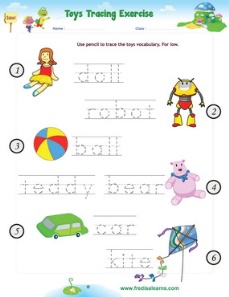
Short term plan
|
Unit: 5. My free time |
Lesson 37 |
||
|
School: |
|
||
|
Teacher’s name: |
|
||
|
Date: |
|
||
|
Grade: 3 |
Number present: |
absent: |
|
|
Lesson title |
Free- time activities. |
||
|
Learning objectives |
3.1.4.2 understand simple descriptions of people, actions, and objects with visual support; 3.2.3.1 respond to basic questions with single words or short responses; 3.3.5.1 read short, illustrated fiction and non-fiction stories written in very simple language using a dictionary; 3.5.1.10 use common present simple forms contractions on a limited range of familiar topics. |
||
|
Lesson objectives (assessment criteria) |
Learners will be able to: - talk about free-time activities; recognize familiar words with visual support; - understand simple descriptions of people and actions with visual support; to use with considerable support basic determiners a, an, the to identify things; |
||
|
Values and its purpose: |
"Law and Order" Know the basics of the legal system and human rights |
||
|
Stages/ Time |
Teachers actions |
Students actions |
Assessment |
Resources |
|
Beginning of the lesson 5 min Middle of the lesson Presentation part. 35 min |
Organization moment : 1.Greeting. . (Whale class, Individually) Warm-up Put up the story cards from the previous lesson on the board in random order. Ask individual pupils to come to the board and put the pictures in the right order, one at a time. Then ask pupils to say parts of the dialogue. Task. I Ex:1 P:62 Introduce free-time activities. Have a discussion about which activities the pupils like, and which activities they think are most popular with boys and which with girls. Explain that we shouldn’t categorise activities based on gender and that boys and girls can be equally good at any activity they choose to do. Present the new vocabulary: go to the park, play football, play tennis, play the guitar, play volleyball, ride a bike |
The pupils listen and point to the pictures. Play the audio a second time, pausing after each phrase. The pupils listen, point to and repeat the activities, chorally and/or individually. Time permitting, ask individual pupils to point to and say the activities. |
Teacher controles the process, gives feedback and asks additional questions if it’s nessasery. Teacher evaluate pupils with phrases like: “Good job! Well done!” Formative Assessment Descriptor: - read the title - answer the question Total: 2 point |
worksheets
|
|
|
Ex:2 P:62 Practise free-time activities. Books closed. Say, as you write on the board: I like going shopping. Underline the letters in bold. The pupils repeat after you. Explain that the verb like is usually followed by the -ing form when we want to say that we like doing something. Explain the activity. Play the audio, twice if necessary. The pupils listen and match the names to the corresponding activities. Check the pupils’ answers. |
Learners practise free-time activities. Listen and match the names to the corresponding activities.
|
Descriptor: - practise free-time activities - listen and match the names Total: 2 point |
|
|
|
Ex:3 P:62 To further practise free-time activities through a game. Divide the pupils into two teams, A and B. A pupil from Team A says an activity that a child from Ex. 2 likes doing and a pupil from Team B has to guess which child it is. Each team has two guesses. If they guess correctly, they get a point. |
Learners practise free-time activities through a game Suggested answer key Team A, Pupil 1: I like going to the park. Who am I? Team B, Pupil 1:You’re Korkem |
Descriptor: - practise free-time activities - play a gaim Total: 2 point |
|
|
End of the lesson 5 min |
Ask students what they learned today. Briefly review greetings and numbers 1-20. |
|
Poster Success
|
|
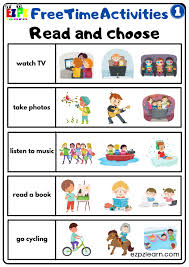
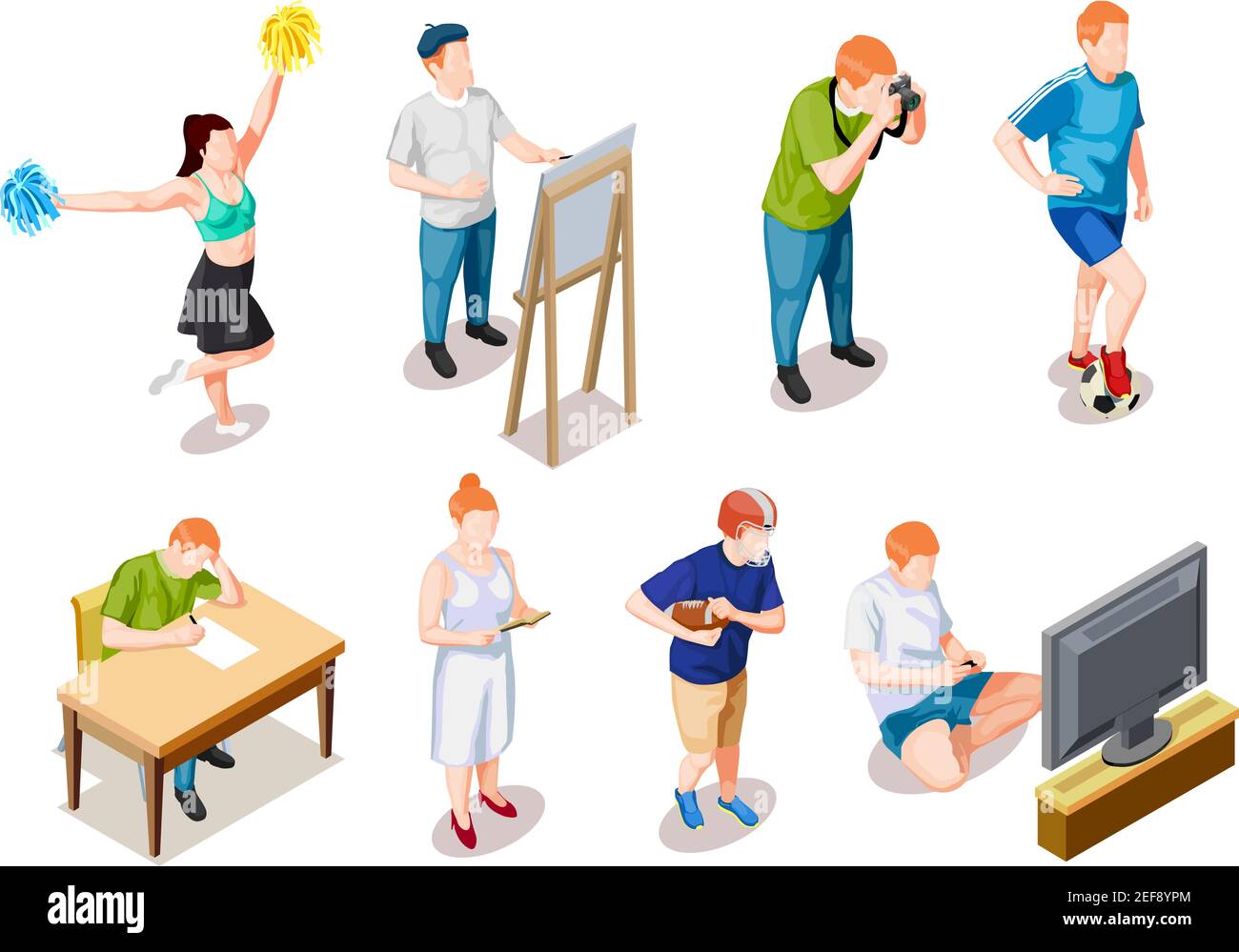
Short term plan
|
Unit: 5. My free time |
Lesson 38 |
||
|
School: |
|
||
|
Teacher’s name: |
|
||
|
Date: |
|
||
|
Grade: 3 |
Number present: |
absent: |
|
|
Lesson title |
I like playing/ I don’t like doing |
||
|
Learning objectives |
3.1.4.2 understand simple descriptions of people, actions, and objects with visual support; 3.2.3.1 respond to basic questions with single words or short responses; 3.3.3.1 understand short, simple instructions used in familiar everyday contexts; 3.5.1.10 use common present simple forms contractions on a limited range of familiar topics. |
||
|
Lesson objectives (assessment criteria) |
Learners will be able to: - To say what they like/don’t like doing; - To understand basic personal questions; - to use isolated words and basic expressions to provide personal information; |
||
|
Values and its purpose: |
"Law and Order" Know the basics of the legal system and human rights |
||
|
Stages/ Time |
Teachers actions |
Students actions |
Assessment |
Resources |
|
Beginning of the lesson 5 min Middle of the lesson Presentation part. 35 min |
Organization moment : 1.Greeting. . (Whale class, Individually) Warm-up Play Mirror me! In pairs, one pupil mimes an activity and the other pupil tries to copy them. Task. I Ex:1 P:63 Present like + verb + ing. Books closed. Say as you write on the board: Do you like cooking? Yes, I do./No, I don’t. Underline the words in bold. The pupils repeat after you. Explain how we form the interrogative and the short answers. Remind the pupils that the verb like is followed by the -ing form. Explain that most verbs do not change when we add -ing (painting, climbing, cooking) but there are exceptions to that rule. Present the spelling difficulties. Say, then write on the board: have – having. Explain that the verbs that end in -e, drop the -e before they take the -ing ending. Follow the same procedure and present run – running. |
Do you like painting? Yes, I do. No, I don’t. paint – painting BUT swim – swimming ride – riding |
Teacher controles the process, gives feedback and asks additional questions if it’s nessasery. Teacher evaluate pupils with phrases like: “Good job! Well done!” Formative Assessment Descriptor: - present like + verb + ing - add -ing Total: 2 point |
https://wordwall.net/ru/resource/37885784
|
|
|
Ex:2 P:63 To present and practise grammar and punctuation mistakes. Say as you write on the board: My name’s Aizhan. Underline the letters in bold. Explain that we use capital letters for the first word of a sentence and that we also use capital letters for names. Write on the board and say: I like run and jumping? Point to and explain the mistakes. The verb like is always followed by the -ing form and we use the question mark only in questions. In affirmative sentences we use a full stop. |
Learners present and practise grammar and punctuation mistakes. |
Descriptor: - present and practise - correct the mistakes Total: 2 point |
Pupil’s book
|
|
|
Ex:3 P:63 Practise talking about preferences. Point to the picture. Read the exchange and explain the activity. In pairs, the pupils practise talking about what they like doing. One pupil mimes the activity and the other pupil tries to guess. Go around the classroom providing any necessary help. Ask some pairs to come to the front of the classroom and act out their dialogues |
Learners act out the dialogues |
Descriptor: - talk with your friend - act out the dialogues Total: 2 point |
|
|
End of the lesson 5 min |
Ask students what they learned today. Briefly review greetings and numbers 1-20. |
Ss evaluate each other and encourage classmate with phrases like: Well done! Brilliant! Good job! I like it! |
Poster Success
|
|
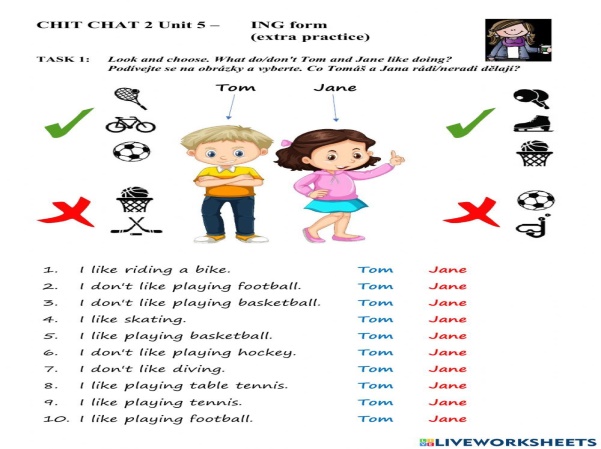
Short term plan
|
Unit: 5. My free time |
Lesson 39 |
||
|
School: |
|
||
|
Teacher’s name: |
|
||
|
Date: |
|
||
|
Grade: 3 |
Number present: |
absent: |
|
|
Lesson title |
Project: My Toy design by Sanzhar |
||
|
Learning objectives |
3.1.4.2 understand simple descriptions of people, actions, and objects with visual support; 3.2.3.2 make basic requests related to immediate personal needs; 3.3.2.1 identify some familiar words and signs on illustrations /pictures in common everyday situations; 3.4.2.2 use words and short simple phrases to complete a written text at a sentence level. |
||
|
Lesson objectives (assessment criteria) |
Learners will be able to: - do a project about a toy design; - say what toys are made of; - find specific information in different types of texts; create a poster using words and simple phrases. |
||
|
Values and its purpose: |
"Law and Order" Know the basics of the legal system and human rights |
||
|
Stages/ Time |
Teachers actions |
Students actions |
Assessment |
Resources |
|
Beginning of the lesson 5 min Middle of the lesson Presentation part. 35 min |
Organization moment : 1.Greeting. . (Whale class, Individually) Warm-up Begin a sentence by saying: I like going to the park. Ask a pupil to repeat your sentence and add their own, e.g. I like going to the park. I like playing the guitar. Then the next pupil repeats the two sentences and add one more. Continue until a pupil forgets one of the sentences. Repeat as many times as you think is necessary Task. I Ex:1 P:64 PROJECT (Art & Design) Present a project about one’s toy design. Point to Sanzhar’s toy design and ask the pupils to identify it. Refer the pupils to the questions and read them aloud. Ask individual pupils to answer them. |
Learners answer the questions Answer key 1 It’s a scooter. 2 It’s metal. 3 It’s blue. It’s big
|
Teacher controles the process, gives feedback and asks additional questions if it’s nessasery. Teacher evaluate pupils with phrases like: “Good job! Well done!” Formative Assessment Descriptor: - look at Sanzhar’s design - answer the question Total: 2 point |
|
|
|
Ex:2 P:64 To generate ideas.
R |
Learners answer the question answer key 1 It’s a train. 2 It’s metal. 3 It’s red. It’s big. |
Descriptor: - answer the question Total: 2 point |
Pupil’s book
|
|
|
Ex:3 P:64 Consolidate the language of the module. Explain the activity. The pupils design their own toy in class or for homework. They can use Sanzhar’s project as a model |
Learners design their own toy
|
Descriptor: - design their own toy - use Sanzhar’s project as a model Total: 2 point |
|
|
End of the lesson 5 min |
Ask students what they learned today. Briefly review greetings and numbers 1-20. |
|
Poster Success
|
|

Short term plan
|
Unit: 5. My free time |
Lesson 40 |
||
|
School: |
|
||
|
Teacher’s name: |
|
||
|
Date: |
|
||
|
Grade: 3 |
Number present: |
absent: |
|
|
Lesson title |
CLIL. Geography. Safety in the playground. |
||
|
Learning objectives |
3.1.2.1 recognise familiar words with visual support; 3.2.3.3 make introductions and requests in basic interaction with others; 3.3.2.2 deduce the meaning of a word in a picture or icon on a limited range of topics; 3.5.1.4 use common adjectives in descriptions of people and things and simple feelings with support. |
||
|
Lesson objectives (assessment criteria) |
Learners will be able to: - explore English through other subject areas (Geography); - talk about safety rules in the playground; |
||
|
Values and its purpose: |
"Law and Order" Know the basics of the legal system and human rights |
||
|
Stages/ Time |
Teachers actions |
Students actions |
Assessment |
Resources |
|
Beginning of the lesson 5 min Middle of the lesson Presentation part. 35 min |
Organization moment : 1.Greeting. . (Whale class, Individually) Warm-up Ask the pupils to present their projects to the class. Make sure you display their work in the classroom. Then help them file it in their Language Portfolio Task. I Ex:1 P:65 Talk about safety in the playground. Point to the first picture and ask: Is it safe? Elicit: No, it isn’t. Say: Don’t stand on a swing. It’s not safe. (If you wish, you can teach the words swing, slide and roundabout.) Explain the reason, in L1 if necessary. Repeat with the remaining pictures. Have a class discussion, in L1 if necessary, about rules we should follow in the playground, apart from the ones in the pictures. |
Learners talk about safety in the playground and circle the correct answer.
|
Teacher controles the process, gives feedback and asks additional questions if it’s nessasery. Teacher evaluate pupils with phrases like: “Good job! Well done!” Formative Assessment Descriptor: - talk about safety in the playground - circle the correct answer Total: 2 point |
|
|
End of the lesson 5 min |
Ask students what they learned today. Briefly review greetings and numbers 1-20. |
|
Poster Success
|
|
Short term plan
|
Unit: 5. My free time |
Lesson 41 |
||
|
School: |
|
||
|
Teacher’s name: |
|
||
|
Date: |
|
||
|
Grade: 3 |
Number present: |
absent: |
|
|
Lesson title |
Sounds and words. SAU №5 |
||
|
Learning objectives |
3.1.4.2 understand simple descriptions of people, actions, and objects with visual support; 3.2.3.3 make introductions and requests in basic interaction with others; 3.2.3.1 respond to basic questions with single words or short responses; 3.4.2.2 use words and short simple phrases to complete a written text at a sentence level. |
||
|
Lesson objectives (assessment criteria) |
Learners will be able to: - To recognise the letters a, h, t, m and u and the sounds they make; - to understand and pronounce the words hat, mum and dad; - to read/recognise the sight words I, my, you, and, can’t, are; to identify and read separate sounds (phonemes) within words, which may be represented by more than one letter - do the tasks of SAU № 5 |
||
|
Values and its purpose: |
"Law and Order" Know the basics of the legal system and human rights |
||
|
Stages/ Time |
Teachers actions |
Students actions |
Assessment |
Resources |
|
Beginning of the lesson 5 min Middle of the lesson Presentation part. 35 min |
Organization moment : 1.Greeting. . (Whale class, Individually) Warm-up Show the pupils pictures from the Internet or magazines you have brought in. Ask the pupils to say if what they see in the pictures is safe/not safe Task. I Ex:1 P:66 Present the letters a, h, t, m and u and the sounds they make. Books closed. Draw a big letter a on the board. Point to it and say \œ\. The pupils repeat after you. Follow the same procedure for the rest of the letters. Books open. Play the audio |
Learners listen, point to the letters and repeat the sounds
|
Teacher controles the process, gives feedback and asks additional questions if it’s nessasery. Teacher evaluate pupils with phrases like: “Good job! Well done!” Formative Assessment Descriptor: - listen, point to the letters - repeat the sounds Total: 2 point |
|
|
|
Ex:2 P:66 Practise recognising the sounds the letters a, h, t, m and u make. Explain the activity. Play the audio, twice if necessary. Check the pupils’ answers. |
Learners practise recognising the sounds the letters listen and circle the right letters. |
Descriptor: - practise the sounds the letters - circle the right letters. Total: 2 point |
|
|
|
Ex:3 P:66 Present words with the letters a, h, t, m and u. Draw a simple sketch of a hat and ask: What’s this? Elicit: hat. Write the letters next to it, point to and say h \h\ – a \œ\ – t \t\ – hat \hœt\. Follow the same procedure and present mum and dad. Play the audio. Ask some pupils to say the letters and the words. |
Learners present words with the letters a, h, t, m and u. Listen, point to and repeat the words. |
Descriptor: - present words with the letters - listen, point to and repeat Total: 2 point |
|
|
End of the lesson 5 min |
Ask students what they learned today. Briefly review greetings and numbers 1-20. |
|
Poster Success
|
|
Short term plan
|
Unit: 5. My free time |
Lesson 42 |
||
|
School: |
|
||
|
Teacher’s name: |
|
||
|
Date: |
|
||
|
Grade: 3 |
Number present: |
absent: |
|
|
Lesson title |
Check point |
||
|
Learning objectives |
3.2.3.1 respond to basic questions with single words or short responses; 3.2.3.2 make basic requests related to immediate personal needs; 3.3.5.1 read short, illustrated fiction and non-fiction stories written in very simple language using a dictionary; 3.5.1.4 use common adjectives in descriptions of people and things and simple feelings with support. |
||
|
Lesson objectives (assessment criteria) |
Learners will be able to: - To revise and consolidate the language of the module; - to spell accurately a few high-frequency words; - to understand short, simple instructions used in familiar everyday contexts; |
||
|
Values and its purpose: |
"Law and Order" Know the basics of the legal system and human rights |
||
|
Stages/ Time |
Teachers actions |
Students actions |
Assessment |
Resources |
|
Beginning of the lesson 5 min Middle of the lesson Presentation part. 35 min |
Organization moment : 1.Greeting. . (Whale class, Individually) Warm-up Do a quick revision of what the pupils have learnt in the module by asking them questions. e.g. Task. I Ex:1 P:67 Read the instructions and explain the activity. Allow the pupils some time to put the words into the correct order to make sentences. Then match them to the corresponding pictures. Check their answer |
Teacher: (pointing to the picture of a robot) Is it soft or hard? Class: It’s hard. Teacher: Is it metal or plastic Learners put the words into the correct order to make sentences.
|
Teacher controles the process, gives feedback and asks additional questions if it’s nessasery. Teacher evaluate pupils with phrases like: “Good job! Well done!” Formative Assessment Descriptor: - put the words into the correct order - make sentences Total: 2 point |
|
|
|
Ex:2 P:67 Refer the pupils to the pictures and elicit what they can see. Read the example and explain the activity. The pupils look at the pictures and complete the sentences. Allow the pupils some time to complete the activity. Check their answers. |
Learners look at the pictures and complete the sentences |
Descriptor: - look at the pictures - complete the sentences Total: 2 point |
|
|
|
Ex:3 P:67 Read the example and explain the activity. Allow the pupils some time to complete the activity. Check their answers |
Learners look and number |
Descriptor: - read the example - look and number Total: 2 point |
|
|
|
Explain the activity. The pupils read the sentences and underline the right answers. Allow the pupils some time to complete the activity. Check their answers. |
Learners read and underline |
Descriptor: - read the sentences - underline the right answers Total: 2 point |
|
|
End of the lesson 5 min |
Ask students what they learned today. Briefly review greetings and numbers 1-20. |
|
Poster Success
|
|
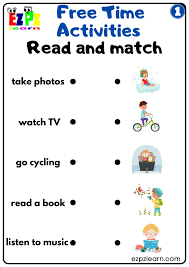
Short term plan
|
|
Lesson 43 |
||
|
School: |
|
||
|
Teacher’s name: |
|
||
|
Date: |
|
||
|
Grade: 3 |
Number present: |
absent: |
|
|
Lesson title |
Body parts |
||
|
Learning objectives |
3.1.2.1 recognise familiar words with visual support; 3.2.3.1 respond to basic questions with single words or short responses; 3.3.3.2 find out the main points in short simple descriptions with visual support; 3.4.1.1 spell accurately a few high-frequency words. |
||
|
Lesson objectives (assessment criteria) |
Learners will be able to: - follow instructions; to describe appearance; - recognise familiar words with visual support; - provide simple descriptions of people; |
||
|
Values and its purpose: |
"Law and Order" Know the basics of the legal system and human rights |
||
|
Stages/ Time |
Teachers actions |
Students actions |
Assessment |
Resources |
|
Beginning of the lesson 5 min Middle of the lesson Presentation part. 35 min |
Organization moment : 1.Greeting. . (Whale class, Individually) Warm-up Hand out the completed Progress Report Cards for the previous module and ask the pupils to file them in their Language Portfolios. Task. I Ex:1 P:69 Introduce the topic of the module. Ask the pupils to look at the picture on page 68 and tell you what they can see, in L1 if necessary. Point to the title of the module and say: Health and Hobbies. Have a discussion, in L1 if necessary, about the importance of hobbies and how they can help us keep healthy (e.g. they help us to relax, they help us be in touch with nature, they make us happy, they bring us closer to our family/friends, they help us keep our mind/body healthy, etc). Ask the pupils about their hobbies and how these hobbies help them keep healthy. Elicit responses from around the class. |
Teacher: (pointing to the picture of a robot) Is it soft or hard? Class: It’s hard. Teacher: Is it metal or plastic Learners look at the picture and tell you what they can see Answer Students’ answer: My hobby is cycling. It keeps me fit and healthy. It also helps
|
Teacher controles the process, gives feedback and asks additional questions if it’s nessasery. Teacher evaluate pupils with phrases like: “Good job! Well done!” Formative Assessment Descriptor: - look at the picture - answer the question Total: 2 point |
|
|
|
Ex:2 P:69 Present and practise plurals and to practise body parts. Books closed. Hold up your hand, say and write: hand. Then hold up both your hands, say and write hands and underline -s. The pupils repeat after you. Remind the pupils that we form the plural form of some nouns by adding an -s at the end of the noun. Then draw a simple picture of a foot on the board, say and write: foot. The pupils repeat after you. Draw another foot next to it, say and write: feet. Explain that feet is the irregular plural of the word foot because we do not add an -s at the end of the word, but, instead, the word changes altogether. If you wish, you may give more examples of irregular plurals, such as tooth – teeth, man – men, child – children, sheep – sheep, etc. |
Learners point to the picture and elicit the parts of the body. Answer key It’s got four legs. It’s got four eyes. It’s got three ears. It’s got four feet. It’s got six hands. It’s got two mouths. It’s got three noses
|
Descriptor: - point to the picture - form the plural form of some nouns Total: 2 point |
|
|
|
Ex:3 P:69 Further practise body parts and to follow instructions through a game. Prepare slips of paper with the phrases from the lesson. Divide the pupils into two teams, A and B, and hand out a slip of paper to each pupil. Explain the game. A pupil from Team A comes to the front of the classroom, selects a pupil from Team B and reads the instruction on their slip of paper. The pupil from Team B has to follow the instruction. If they perform the action successfully, their team gets a point, otherwise no point is awarded. Then the teams swap roles and the game continues. The team with the most points wins the game. Alternatively, the pupils can play the game in pairs |
Learners Team A Pupil 1: (holding the ‘Touch your head!’ slip) Touch your head! Team B Pupil 1: (touches his/her head) Teacher: Well done! One point for Team B! |
Descriptor: - practise body parts - follow instructions through a game Total: 2 point |
|
|
End of the lesson 5 min |
Ask students what they learned today. Briefly review greetings and numbers 1-20. |
|
Poster Success
|
|
Short term plan
|
Unit: 6. Health (10 hours) |
Lesson 44 |
||
|
School: |
|
||
|
Teacher’s name: |
|
||
|
Date: |
|
||
|
Grade: 3 |
Number present: |
absent: |
|
|
Lesson title |
Healthy food |
||
|
Learning objectives |
3.1.4.2 understand simple descriptions of people, actions, and objects with visual support; 3.2.3.1 respond to basic questions with single words or short responses; 3.3.5.1 read short, illustrated fiction and non-fiction stories written in very simple language using a dictionary; 3.5.1.7 use demonstrative pronouns this, these, that, and those to indicate things in closed questions with support; |
||
|
Lesson objectives (assessment criteria) |
Learners will be able to: - identify and distinguish between fruit and vegetables; - recognise familiar words with visual support; understand short, simple instructions used in familiar everyday contexts. |
||
|
Values and its purpose: |
"Law and Order" Know the basics of the legal system and human rights |
||
|
Stages/ Time |
Teachers actions |
Students actions |
Assessment |
Resources |
|
Beginning of the lesson 5 min Middle of the lesson Presentation part. 35 min |
Organization moment : 1.Greeting. . (Whale class, Individually) Warm-up Prepare slips of paper with the phrases from Lesson 1 (one per slip) and put them in a box. Ask individual pupils to come to the front of the classroom, pick a slip of paper from the box and read the phrase aloud. The rest of the class follow the instruction. Repeat the activity with more pupils. Task. I Ex:1 P:70 The pupils listen and point to the pictures. Play the audio a second time, pausing after each word. The pupils listen, point to and repeat the fruit and vegetables. Colour the fruit red. Colour the vegetables green. Then point to the apple and ask: Is it a fruit or a vegetable? Elicit: (It’s) a fruit. Repeat for the rest of the items. Explain the activity for the pupils to complete |
Teacher: (pointing to the picture of a robot) Is it soft or hard? Class: It’s hard. Teacher: Is it metal or plastic Learners listen, point to and repeat the actions, chorally and/or individually. Colour the fruit red. Colour the vegetables green. |
Teacher controles the process, gives feedback and asks additional questions if it’s nessasery. Teacher evaluate pupils with phrases like: “Good job! Well done!” Formative Assessment Descriptor: - listen, point to and repeat - colour the pictures red and green. Total: 2 point |
|
|
|
Ex:2 P:70 Further practise fruit and vegetables through a song. Present the song. Say: Juice it up! Juice it up! Make a yummy smoothie! The pupils repeat after you. Follow the same procedure and present the rest of the song. Play the audio. The pupils listen and follow along in their books. Play the audio again and encourage the pupils to sing along. If you wish, play the animated video for the pupils to watch and sing along. (See the Introduction for further ideas and activities.) |
Learners to sing along. |
Descriptor: - point to the picture - form the plural form of some nouns Total: 2 point |
https://wordwall.net/ru/resource/1431458
|
|
End of the lesson 5 min |
Ask students what they learned today. Briefly review greetings and numbers 1-20. |
|
Poster Success
|
|
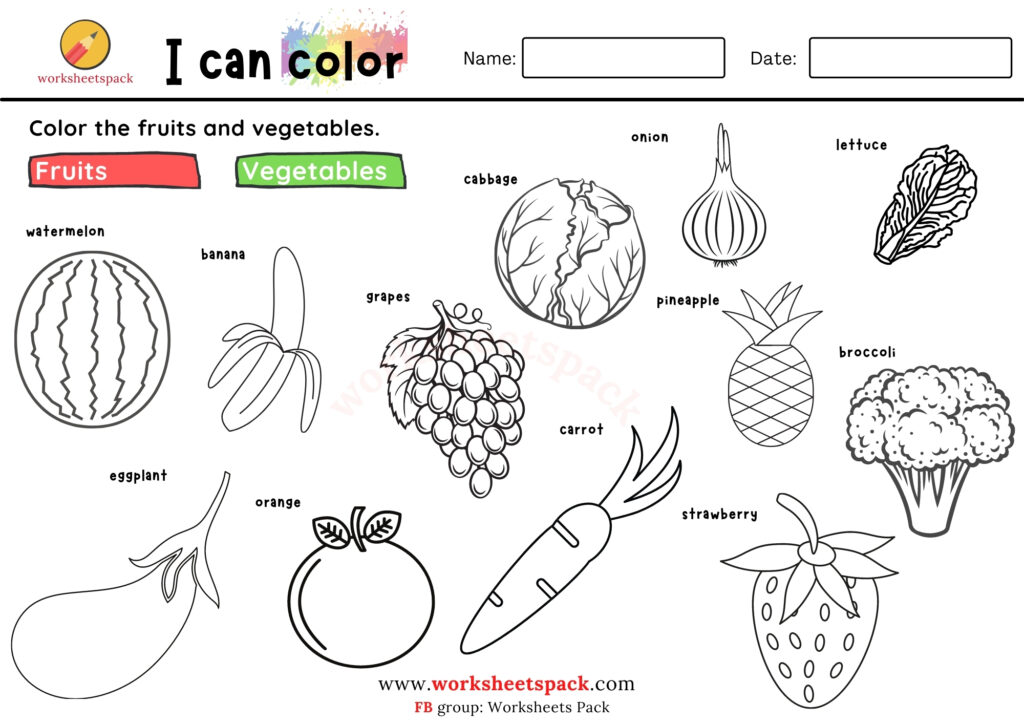
Short term plan
|
Unit: 6. Health (10 hours) |
Lesson 45 |
||
|
School: |
|
||
|
Teacher’s name: |
|
||
|
Date: |
|
||
|
Grade: 3 |
Number present: |
absent: |
|
|
Lesson title |
Food preferences. Use of English: Object pronouns. |
||
|
Learning objectives |
3.1.2.1 recognise familiar words with visual support; 3.2.3.1 respond to basic questions with single words or short responses; 3.3.3.2 find out the main points in short simple descriptions with visual support; 3.5.1.1 use singular and plural nouns, including some common irregular plural forms and high-frequency uncountable nouns; 3.4.2.2 use words and short simple phrases to complete a written text at a sentence level. |
||
|
Lesson objectives (assessment criteria) |
Learners will be able to: - practise talking about preferences; - say what food they like/don’t like; - understand basic personal questions; - understand short, simple instructions used in familiar everyday contexts; link ideas with and, but, to use common present simple forms and contractions on a limited range of familiar topics. |
||
|
Values and its purpose: |
"Law and Order" Know the basics of the legal system and human rights |
||
|
Stages/ Time |
Teachers actions |
Students actions |
Assessment |
Resources |
|
Beginning of the lesson 5 min Middle of the lesson Presentation part. 35 min |
Organization moment : 1.Greeting. . (Whale class, Individually) Warm-up Write words from the previous lesson on the board, with some letters missing (e.g. o_a_ _e). Ask individual pupils to come to the board and complete the words (orange) Task. I Ex:1 P:71 Present and practise the verb ‘like’ and object pronouns. Books closed. Say as you write on the board: I like bananas. I like them. Yummy! Rubbing your tummy at the same time. The pupils repeat after you. Underline the words in bold and explain their meaning. Follow the same procedure and present the negative and interrogative form of the verb like and the rest of the object pronouns. Explain that object pronouns are used after verbs. |
Teacher: (pointing to the picture of a robot) Is it soft or hard? Class: It’s hard. Teacher: Is it metal or plastic Learners listen and choose the correct bowl. Practise the verb ‘like’ and object pronouns |
Teacher controles the process, gives feedback and asks additional questions if it’s nessasery. Teacher evaluate pupils with phrases like: “Good job! Well done!” Formative Assessment Descriptor: - practise the verb ‘like’ and object pronouns - choose the correct bowl. Total: 2 point |
|
|
|
Ex:2 P:71 Further practise object pronouns. Read the instructions and the example. Explain the activity. The pupils read the sentences and circle the right words. Check their answers. |
Learners read and underline them. Practise object pronouns ANSWERS 1 them 2 it 3 you 4 her 5 me 6 them |
Descriptor: - practise object pronouns - read and underline Total: 2 point |
|
|
|
Ex:3 P:71 Practise food preferences through a game. Read the example aloud. Focus the pupils’ attention on the use of and to add more information, and but to show contrast. Explain the game. The pupils, in groups of three, sit in a circle. Pupil 1 starts by saying a fruit/vegetable they like. The pupil next to him/ her repeats the sentence and adds one more item. The next pupil (i.e. the third pupil each time) has to repeat what has been said and use but in order to add a food item they don’t like. The pupil that forgets an item or uses the wrong linking word steps out of the circle. |
Learners practise food preferences through a game. ANSWERS Pupil 1: I like bananas. Pupil 2: I like bananas and pears. Pupil 3: I like bananas and pears, but I don’t like ranges. |
Descriptor: - practise food preferences through a game - use of and, but Total: 2 point |
https://wordwall.net/ru/resource/32785687
|
|
End of the lesson 5 min |
Ask students what they learned today. Briefly review greetings and numbers 1-20. |
|
Poster Success
|
|
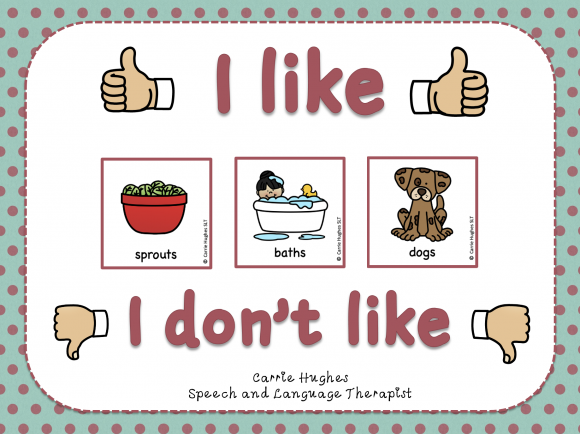
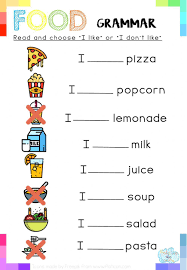
Short term plan
|
Unit: 6. Health (10 hours) |
Lesson 46 |
||
|
School: |
|
||
|
Teacher’s name: |
|
||
|
Date: |
|
||
|
Grade: 3 |
Number present: |
absent: |
|
|
Lesson title |
A smoothie shower |
||
|
Learning objectives |
3.1.2.1 recognise familiar words with visual support; 3.2.3.1 respond to basic questions with single words or short responses; 3.3.1.2 identify and read separate sounds (phonemes) within words, which may be represented by more than one letter; 3.3.3.1 understand short, simple instructions used in familiar everyday contexts; 3.4.1.1 spell accurately a few high-frequency words. |
||
|
Lesson objectives (assessment criteria) |
Learners will be able to: - listen to and read a story about the characters helping Grandpa make a smoothie; - make a shopping basket and play a game; - understand short, simple instructions used in familiar everyday contexts; |
||
|
Values and its purpose: |
"Law and Order" Know the basics of the legal system and human rights |
||
|
Stages/ Time |
Teachers actions |
Students actions |
Assessment |
Resources |
|
Beginning of the lesson 5 min Middle of the lesson Presentation part. 35 min |
Organization moment : 1.Greeting. . (Whale class, Individually) Warm-up Play the I Spy game with the class. Say: I spy with my little eye a yellow fruit. Invite the pupils to name the fruit (banana). The pupil who names it first, plays next. Task. I Ex:1 P:72 Present the A Smoothie Shower! story. Read the title of the story and elicit its meaning. Ask: What is the story about? Let’s find out! Go through the pictures and set the scene. Follow the same procedure and present the rest of the story. Play the audio. The pupils listen and follow along in their books. Ask: What fruit and vegetables are there in the smoothie? Write bananas, apples, carrots, broccoli, oranges on the board. Play the audio again. The pupils listen and answer (bananas, oranges, carrots). Time permitting, play the audio a third time with pauses for Check the pupils’ pronunciation and intonation. If you wish, play the animated video for the pupils to watch |
Teacher: (pointing to the picture of a robot) Is it soft or hard? Class: It’s hard. Teacher: Is it metal or plastic Learners listen and repeat, chorally and/or individually. Teacher: (pointing to Grandpa in picture 1) Who’s this? Class: Grandpa. Teacher: Yes! (pointing to the children) Who are they? Class: Cody, Elsa, Carlos and Tara. Teacher: Where are they? Class: In the kitchen. |
Teacher controles the process, gives feedback and asks additional questions if it’s nessasery. Teacher evaluate pupils with phrases like: “Good job! Well done!” Formative Assessment Descriptor: - listen and repeat Total: 2 point |
|
|
|
Ex:2 P:73 Check the pupils’ comprehension of the story. Explain the activity. The pupils read the story again and match the phrases to the people. Check their answers. Extension Activity (Optional). |
Learners read the story again and match the phrases to the people. ANSWERS A 3 B 1 C 2 D 4 |
Descriptor: - read the story again - match the phrases Total: 2 point |
|
|
|
Ex:3 P:73 Practise buying and selling fruit and vegetables through a game. Explain the activity. Hand out the photocopies of the shopping basket and food templates from the Teacher’s Resource Material. Have the pupils colour and cut them out. Help them put the shopping basket together. Alternatively, ask the pupils from the previous lesson to bring in a tissue/shoe box Play the Shopping game. Divide the pupils into two teams, A and B. Team B are the Sellers and Team A are the Buyers. The pupils have their paper food items on display. When they are ready, they carry out exchanges, as in the example. Then Team B become Buyers and Team A Sellers and the game continues. e.g. Team A, Pupil 1: I like broccoli. Team B, Pupil 1: Broccoli? Here you are! etc |
Learners buy and sell fruit and vegetables through a game. ANSWERS
|
Descriptor: - play a game - buy and sell fruit and vegetables Total: 2 point |
|
|
End of the lesson 5 min |
Ask students what they learned today. Briefly review greetings and numbers 1-20. |
|
Poster Success
|
|
Short term plan
|
Unit: 6. Health (10 hours) |
Lesson 47 |
||
|
School: |
|
||
|
Teacher’s name: |
|
||
|
Date: |
|
||
|
Grade: 3 |
Number present: |
absent: |
|
|
Lesson title |
Food and drinks. |
||
|
Learning objectives |
3.1.4.1 understand basic personal questions; 3.2.3.1 respond to basic questions with single words or short responses; 3.3.5.1 read short, illustrated fiction and non-fiction stories written in very simple language using a dictionary; 3.4.4.1 link ideas with and, but; 3.5.1.10 use common present simple forms and contractions on a limited range of familiar topics. |
||
|
Lesson objectives (assessment criteria) |
Learners will be able to: - present food and drink items; - recognise familiar words with visual support; - understand simple descriptions of objects with visual support; understand short, simple instructions used in familiar everyday contexts. |
||
|
Values and its purpose: |
"Law and Order" Know the basics of the legal system and human rights |
||
|
Stages/ Time |
Teachers actions |
Students actions |
Assessment |
Resources |
|
Beginning of the lesson 5 min Middle of the lesson Presentation part. 35 min |
Organization moment : 1.Greeting. . (Whale class, Individually) Warm-up Say some sentences/phrases from the story in the previous lesson and have the pupils tell you which character is talking.
Task. I Ex:1 P:74 Present food and drink items. Present the new vocabulary. (See p. X of the Introduction for ways to present the new vocabulary.) |
Teacher: (pointing to the picture of a robot) Is it soft or hard? Class: It’s hard. Teacher: Is it metal or plastic Learners listen, point to and repeat the food and drink items, chorally and/or individually. |
Teacher controles the process, gives feedback and asks additional questions if it’s nessasery. Teacher evaluate pupils with phrases like: “Good job! Well done!” Formative Assessment Descriptor: - listen and repeat Total: 2 point |
|
|
|
Ex:2 P:74 Practise food and drink items. Point to the pictures and elicit the items. Read the example and explain the activity. Allow the pupils some time to complete it. Check their answers |
Learners practise food and drink items. Look read and match. ANSWERS 1 B 2 A 3 D 4 C |
Descriptor: - practise food and drink - read and match. Total: 2 point |
|
|
End of the lesson 5 min |
Ask students what they learned today. Briefly review greetings and numbers 1-20. |
|
Poster Success
|
|
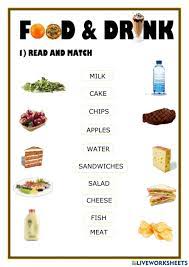
Short term plan
|
Unit: 6. Health (10 hours) |
Lesson 48 |
||
|
School: |
|
||
|
Teacher’s name: |
|
||
|
Date: |
|
||
|
Grade: 3 |
Number present: |
absent: |
|
|
Lesson title |
I can talk about food. Use of English: a, an, some any |
||
|
Learning objectives |
3.1.4.2 understand simple descriptions of people, actions, and objects with visual support; 3.2.4.1 provide simple descriptions of people, and objects; 3.3.4.1 find specific information in different types of texts (postcards, posters, flyers, messages, and notices: places, time, and prices); 3.4.2.2 use words and short simple phrases to complete a written text at a sentence level; 3.5.1.10 use common present simple forms and contractions on a limited range of familiar topics. |
||
|
Lesson objectives (assessment criteria) |
Learners will be able to: - talk about food; to understand short, simple instructions used in familiar everyday contexts; - use words and short simple phrases to complete a written text at a sentence level; - use singular and plural nouns and high-frequency uncountable nouns; use there is/are in a limited range of familiar topics; |
||
|
Values and its purpose: |
"Law and Order" Know the basics of the legal system and human rights |
||
|
Stages/ Time |
Teachers actions |
Students actions |
Assessment |
Resources |
|
Beginning of the lesson 5 min Middle of the lesson Presentation part. 35 min |
Organization moment : 1.Greeting. . (Whale class, Individually) Warm-up Ask a pupil to come to the board. Name a food/ drink item from the previous lesson. The pupil writes the word and/or draws a sketch. Ask the rest of the class for verification. Repeat with as many pupils as you feel necessary. Task. I Ex:1 P:75 Present and practise ‘a/an, some’. Books closed. Draw a carrot on the board. Say and write: a carrot. Underline the article. The pupils repeat after you. Draw an orange on the board. Say and write: an orange. Underline the article. The pupils repeat after you. Draw two carrots and some chocolate on the board. Say and write: some carrots and some chocolate. The pupils repeat after you. Elicit the use of a before singular countable nouns starting with a consonant, the use of an before singular countable nouns starting with a vowel, and the use of some before countable nouns in the plural and uncountable nouns. |
Teacher: (pointing to the picture of a robot) Is it soft or hard? Class: It’s hard. Teacher: Is it metal or plastic Learners write a, an or some ANSWERS 2 an apple 3 some bananas 4 an orange 5 some juice 6 some popcorn |
Teacher controles the process, gives feedback and asks additional questions if it’s nessasery. Teacher evaluate pupils with phrases like: “Good job! Well done!” Formative Assessment Descriptor: - write a, an or some Total: 2 point |
|
|
|
Ex:2 P:75 Present and practise ‘some/any’. The pupils repeat after you. Underline any and explain that we use it in negative and interrogative sentences. Books open. Refer the pupils to the first column in the Grammar box and go through it briefly. Explain the activity. Allow the pupils some time to read through the sentences and underline the right answers. Check their answers. |
Learner present and practise ‘some/any’. Read and underline. ANSWERS 2 any 3 any 4 some 5 any 6 any |
Descriptor: - present and practise - read and underline . Total: 2 point |
|
|
|
Ex:3 P:75 Further practise ‘a/an’ and ‘any’. Refer the pupils to the table and elicit the food/drink items. Read the example aloud and explain the activity. The pupils ask and answer in pairs. |
Learners practise ‘a/an’ and ‘any’. Talk with your friends. ANSWERS Pupil 1: (picks ‘popcorn’ in square 1A) Pupil 2: Is there any ice cream? Pupil 1: No,there isn’t. Pupil 2: Is there any popcorn? Pupil 1: Yes, there is. Pupil 2: 1A. |
Descriptor: - talk with your friends. - ask and answer in pairs. Total: 2 point |
|
|
End of the lesson 5 min |
Ask students what they learned today. Briefly review greetings and numbers 1-20. |
|
Poster Success
|
|
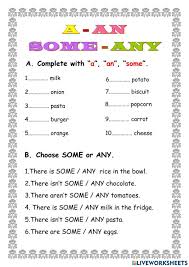
Short term plan
|
Unit: 6. Health (10 hours) |
Lesson 49 |
||
|
School: |
|
||
|
Teacher’s name: |
|
||
|
Date: |
|
||
|
Grade: 3 |
Number present: |
absent: |
|
|
Lesson title |
Project: A Day poster by Zhaniya SAU № 6 |
||
|
Learning objectives |
3.1.4.2 understand simple descriptions of people, actions, and objects with visual support; 3.2.4.1 provide simple descriptions of people, and objects; 3.3.5.1 read short, illustrated fiction and non-fiction stories written in very simple language using a dictionary; 3.4.3.1 create a poster or a postcard, using words and simple phrases. |
||
|
Lesson objectives (assessment criteria) |
Learners will be able to: - make a food poster; - write about the fruit and vegetables they eat every day; - understand short, simple instructions used in familiar everyday contexts; |
||
|
Values and its purpose: |
"Law and Order" Know the basics of the legal system and human rights |
||
|
Stages/ Time |
Teachers actions |
Students actions |
Assessment |
Resources |
|
Beginning of the lesson 5 min Middle of the lesson Presentation part. 35 min |
Organization moment : 1.Greeting. . (Whale class, Individually) Warm-up Ask a pupil to come to the board. Whisper a food item to him/her. The pupil draws the item on the board. The rest of the class try to guess the item. Task. I Ex:1 P:76 Present a food poster. Refer the pupils to the poster and elicit what they can see. Explain the activity. Allow the pupils some time to read through the text and complete the activity. Check their answers. |
Teacher: (pointing to the picture of a robot) Is it soft or hard? Class: It’s hard. Teacher: Is it metal or plastic Learners read the text and complete the activity ANSWERS 2 apples 3 broccoli 4 carrots |
Teacher controles the process, gives feedback and asks additional questions if it’s nessasery. Teacher evaluate pupils with phrases like: “Good job! Well done!” Formative Assessment Descriptor: - write a, an or some Total: 2 point |
|
|
|
Ex:2 P:76 Check the pupils’ comprehension of the text. Check their answers. |
Learner read the text and tick the food items mentioned/seen in the poster. ANSWERS
●
●
● ● |
Descriptor: - present and practise - read and underline . Total: 2 point |
|
|
|
Ex:3 P:76 Generate ideas. Read the questions aloud and invite individual pupils to answer them. |
Learners tell the class about Zhaniya’s poster ANSWERS Yes, I do. Pears, oranges and carrots. |
Descriptor: - look at the Zhaniya’s poster - ask and answer in pairs. Total: 2 point |
|
|
End of the lesson 5 min |
Ask students what they learned today. Briefly review greetings and numbers 1-20. |
|
Poster Success
|
|
Short term plan
|
Unit: 6. Health (10 hours) |
Lesson 50 |
||
|
School: |
|
||
|
Teacher’s name: |
|
||
|
Date: |
|
||
|
Grade: 3 |
Number present: |
absent: |
|
|
Lesson title |
CLIL. Science. Sounds and words |
||
|
Learning objectives |
3.1.4.2 understand simple descriptions of people, actions, and objects with visual support 3.3.3.2 find out the main points in short simple descriptions with visual support 3.4.2.2 use words and short simple phrases to complete a written text at a sentence level 3.2.3.1 respond to basic questions with single words or short responses. |
||
|
Lesson objectives (assessment criteria) |
Learners will be able to: - explore English through other subject areas (Science); - say which food is/isn’t good for the teeth; - understand short, simple instructions used in familiar everyday contexts. - read/recognise the sight words there, small, is, and, a, it; identify and read separate sounds (phonemes) within words, which may be represented by more than one letter; |
||
|
Values and its purpose: |
"Law and Order" Know the basics of the legal system and human rights |
||
|
Stages/ Time |
Teachers actions |
Students actions |
Assessment |
Resources |
|
Beginning of the lesson 5 min Middle of the lesson Presentation part. 35 min |
Organization moment : 1.Greeting. . (Whale class, Individually) Warm-up Name a food/drink item. The pupils put their thumbs up or down depending on whether the food/drink item is good or bad for the teeth. Task. I Ex:1 P:77 Present and talk about food/drink items that are good and bad for the teeth. Books closed. Have a class discussion, in L1 in necessary, about the importance of looking after our teeth. Ask the pupils to tell you what they do in order to keep their teeth in good condition (e.g. brush them every day, etc). Explain that some food/ drink items are good for our teeth, whereas others are bad for our teeth. Brainstorm food/drink items that are good/bad for our teeth and write them in two lists on the board. This is a good time to present any new vocabulary. Point to the sweets and say: Sweets are bad for your teeth. Refer the pupils to the sentence in the book and read it aloud. Ask individual pupils to make si |
Teacher: (pointing to the picture of a robot) Is it soft or hard? Class: It’s hard. Teacher: Is it metal or plastic Learners repeat after you. The pupils point to the pictures, point to and read the food items. ANSWERS good: apples, milk, carrots, egg bad: sweets, cake, chocolate, cola, ice cream, jam |
Teacher controles the process, gives feedback and asks additional questions if it’s nessasery. Teacher evaluate pupils with phrases like: “Good job! Well done!” Formative Assessment Descriptor: - talk about food/drink - identify that are good and bad for the teeth Total: 2 point |
|
|
|
Ex:2 P:76 Learn how to look after their teeth through a song. Present the song. Say, as you mime: Happy teeth, happy teeth, brush them every day! The pupils repeat after you. Repeat the procedure and present the rest of the song. Play the audio, twice if necessary. The pupils listen, mime and sing along. If you wish, play the animated video for the pupils to watch and sing along. |
Learner listen, mime and sing along b |
Descriptor: - listen, mime and sing along Total: 2 point |
|
|
End of the lesson 5 min |
Ask students what they learned today. Briefly review greetings and numbers 1-20. |
|
Poster Success
|
|
Short term plan
|
Unit: 6. Health (10 hours) |
Lesson 51 |
||
|
School: |
|
||
|
Teacher’s name: |
|
||
|
Date: |
|
||
|
Grade: 3 |
Number present: |
absent: |
|
|
Lesson title |
SAT № 3 |
||
|
Learning objectives |
The teacher chooses SAT’s Learning Objectives for Listening, Reading and Writing that were used during the term. Speaking should be controlled separately |
||
|
Lesson objectives (assessment criteria) |
Learners will be able to: Lesson Objectives will be determined in accordance with the chosen Learning Objectives before. The teacher creates the tasks reflecting the Lesson Objectives and describes the test procedure in Specification of the Summative Assessment for the Term. |
||
|
Values and its purpose: |
"Law and Order" Know the basics of the legal system and human rights |
||
|
Stages/ Time |
Teachers actions |
Students actions |
Assessment |
Resources |
|
Beginning of the lesson 5 min Middle of the lesson Presentation part. 35 min |
Organization moment : 1.Greeting. . (Whale class, Individually) Warm-up Welcomes the pupils and introduce the topic of the lesson. Creates a positive psychological environment. LISTENING Task. 1 READING Task 2 WRITING Task 3
Speaking Task 4 |
Teacher: (pointing to the picture of a robot) Is it soft or hard? Class: It’s hard. Teacher: Is it metal or plastic |
Teacher controles the process, gives feedback and asks additional questions if it’s nessasery. Teacher evaluate pupils with phrases like: “Good job! Well done!” |
|
|
End of the lesson 5 min |
Ask students what they learned today. Briefly review greetings and numbers 1-20. |
|
Poster Success
|
|
Short term plan
|
Unit: 6. Health (10 hours) |
Lesson 52 |
||
|
School: |
|
||
|
Teacher’s name: |
|
||
|
Date: |
|
||
|
Grade: 3 |
Number present: |
absent: |
|
|
Lesson title |
Check point |
||
|
Learning objectives |
3.1.4.2 understand simple descriptions of people, actions, and objects with visual support; 3.2.4.1 provide simple descriptions of people, and objects; 3.3.4.1 find specific information in different types of texts (postcards, posters, flyers, messages, and notices: places, time, and prices); 3.4.2.2 use words and short simple phrases to complete a written text at a sentence level; 3.4.3.1 create a poster or a postcard, using words and simple phrases. |
||
|
Lesson objectives (assessment criteria) |
Learners will be able to: - understand short, simple instructions used in familiar everyday contexts. - revise and consolidate the language of the module; - spell accurately a few high-frequency words; |
||
|
Values and its purpose: |
"Law and Order" Know the basics of the legal system and human rights |
||
|
Stages/ Time |
Teachers actions |
Students actions |
Assessment |
Resources |
|
Beginning of the lesson 5 min Middle of the lesson Presentation part. 35 min |
Organization moment : 1.Greeting. . (Whale class, Individually) Warm-up Do a quick revision of what the pupils have learnt in the module by asking them questions. Task. I Ex:1 P:79 Refer the pupils to the pictures and elicit the body parts. Read the example and explain the activity. The pupils read the sentences and number the pictures accordingly. Allow them some time to complete the activity. Check their answers. |
Teacher: (pointing to the picture of a robot) Is it soft or hard? Class: It’s hard. Teacher: Is it metal or plastic Learners read and number the sentences ANSWERS A 1 B 2 C 3 D 0 |
Teacher controles the process, gives feedback and asks additional questions if it’s nessasery. Teacher evaluate pupils with phrases like: “Good job! Well done!” Descriptor: - read and number the sentences Total: 2 point |
|
|
|
Ex:2 P:79 Refer the pupils to the picture and elicit the food items. Read the example and explain the activity. The pupils look at the picture, read the items and put a tick or a cross accordingly. Allow them some time to complete the activity. Check their answers Ex:3 P:79 Read and choose. Explain the activity. The pupils read the sentences and choose the right answers. Allow the pupils time to complete the activity. Check their answers.
|
Learner look at the picture put a tick or a cross ANSWERS 0 √ 1 X 2 √ 3 √ 4 X 5 X
Learner choose correct answer ANSWERS 1 b 2 b 3 a 4 a 5 a |
Descriptor: - look at the picture - put a tick or a cross Total: 2 point Descriptor: - read the sentences - choose the right answers. Total: 2 point |
Student’s book |
|
End of the lesson 5 min |
Ask students what they learned today. Briefly review greetings and numbers 1-20. |
|
Poster Success
|
|
жүктеу мүмкіндігіне ие боласыз
Бұл материал сайт қолданушысы жариялаған. Материалдың ішінде жазылған барлық ақпаратқа жауапкершілікті жариялаған қолданушы жауап береді. Ұстаз тілегі тек ақпаратты таратуға қолдау көрсетеді. Егер материал сіздің авторлық құқығыңызды бұзған болса немесе басқа да себептермен сайттан өшіру керек деп ойласаңыз осында жазыңыз
Lesson plan "English language 3" term 3
Lesson plan "English language 3" term 3
Short term plan
|
Unit: Unit 5. My free time |
Lesson 33 |
||
|
School: |
|
||
|
Teacher’s name: |
|
||
|
Date: |
|
||
|
Grade: 3 |
Number present: |
absent: |
|
|
Lesson title |
I can do this! |
||
|
Learning objectives |
3.1.2.1 recognise familiar words with visual support; 3.2.2.1 use isolated words and basic expressions to provide personal information 3.2.3.1 respond to basic questions with single words or short responses; 3.5.1.16 use let’s + verb, verbs go/like + verb + ing |
||
|
Lesson objectives (assessment criteria) |
Learners will be able to: - recognise familiar words with visual support; - respond to basic questions with single words or short responses; - make basic requests related to immediate personal needs; to use can/can’t to describe ability; |
||
|
Values and its purpose: |
"Law and Order" Know the basics of the legal system and human rights |
||
|
Stages/ Time |
Teachers actions |
Students actions |
Assessment |
Resources |
|
Beginning of the lesson 5 min |
Organization moment : 1.Greeting. . (Whale class, Individually) Warm-up Phonetic Drill Exercise. Ask the pupils to look at the picture on p. 56 and tell you what they can see, in L1 if necessary. Point to the title of the module and say: My Free Time. Ask: Where do you go in your free time? Do you go to the park? Do you go to the playground? Elicit responses from pupils and have a class discussion, in L1 if necessary. Ask the pupils to tell you what they usually do in their free time. Elicit responses from around the class. Lead – In
|
Greet the teacher and classmates. Introduce themselves in pairs. Sts. listen to the song and name a topic of the lesson. https://youtu.be/YywiAe4kWJ4 Sts. name a verb and make up sentences with a modal verb can. Sts. answer: Yes/ No and give a full sentence. |
Teacher controles the process, gives feedback and asks additional questions if it’s nessasery. Teacher evaluate pupils with phrases like: “Good job! Well done!” Formative Assessment
|
|
|
Middle of the lesson Presentation part. 35 min |
Task. I Ex:1 P:57 Ask: What’s your favourite activity? Explain the meaning, in L1 if necessary. Have a discussion about which activities the pupils like, and which activities they think are most popular with boys and which with girls. Ask: Can girls climb? Can boys dance? etc Have them say if they think girls can do boy- oriented activities (e.g. football) and if boys can do activities associated with girls (e.g. dance). |
Learners listen and point to the pictures. The pupils listen, point to and repeat the actions, chorally and/or individually. Transcript run, fly, walk, talk, ride a bike, ride a scooter walk, run, ride a scooter, talk, ride a bike, fly Listen and repeat. run, fly, walk, talk, ride a bike, ride a scooter |
T’s feedback Descriptor: - look at the family members - match descriptions to pictures Point 2
|
Free time activity flashcards
|
|
|
Task. II Ex: 2 P: 57 Say and write on the board: I can run. You can run. The pupils repeat after you. Explain that we use can to talk about what we can/can’t do. Underline the words in bold. Say and write on the board: He can run. She can run. The pupils repeat after you. Underline the words in bold. Elicit from the pupils that can is the same in all persons. Follow the same procedure and present the negative and interrogative forms. Explain that cannot should always be written as one word and the short form is can’t |
Learners listen to the chant and say the words. Transcript Teacher: you/dance Pupil 1: You can dance. Teacher: he/swim? No. Pupil 2: Can he swim? No, he can’t. etc |
Self -assessment Descriptor: - listen to the chant. - add actions for each family Point 2
|
https://wordwall.net/ru/resource/1624332 |
|
|
Task. III Ex: 3 P: 57 Play the Who am I? game To practise talking about ability through a game. Divide the class into two teams, A and B. Explain the game. Choose a child from Ex. 2 and say what you can do. In teams, the pupils guess who you are. Alternatively, a pupil from each team takes your role. |
Learners Teacher: I can draw. Who am I? Team A,Pupil 1:Aidar! Teacher: No, I’m not. I can dance and I can climb, too! Who am I? Team B, Pupil 1: kbota! Teacher: Yes, I am! |
Descriptor: - listen to the recording - answer the question |
Worksheet
|
|
|
||||
|
End of the lesson 5 min |
Briefly ask students what they learned today (greetings, names of characters, introducing themselves). Ex: P: Home task: |
Pupils evaluate themselves using evaluation lists. Reflection. Self- Assessment. |
Poster Success
|
|


Short term plan
|
Unit: 5. My free time |
Lesson 34 |
||
|
School: |
|
||
|
Teacher’s name: |
|
||
|
Date: |
|
||
|
Grade: 3 |
Number present: |
absent: |
|
|
Lesson title |
My Toys and Sport. I like ... |
||
|
Learning objectives |
3.1.4.1 understand basic personal questions; 3.2.3.1 respond to basic questions with single words or short responses; 3.3.3.2 find out the main points in short simple descriptions with visual support; 3.5.1.13 use can/ can’t to describe ability. |
||
|
Lesson objectives (assessment criteria) |
Learners will be able to: - identify and describe toys and games; - recognise familiar words with visual support. |
||
|
Values and its purpose: |
"Law and Order" Observance of norms and rules of order and justice understand the need |
||
|
Stages/ Time |
Teachers actions |
Students actions |
Assessment |
Resources |
|
Beginning of the lesson 5 min |
Organization moment : 1.Greeting. . (Whale class, Individually) Warm-up To revise the language of the previous lesson. Play Simon Says. The pupils follow the commands only if they are preceded by Simon Says. Pupils are out of the game if they follow a command that’s not preceded by the phrase Simon says.
|
Learners identify characters and potentially share details from the previous lesson. . |
Teacher controles the process, gives feedback and asks additional questions if it’s nessasery. Teacher evaluate pupils with phrases like: “Good job! Well done!” Formative Assessment
|
Flashcards
|
|
Middle of the lesson Presentation part. 35 min |
Task. I Ex:1 P: 58 Introduce toys and games; To talk about soft and hard toys. Point to the teddy bear and say, as you mime squeezing it: It’s soft. The pupils repeat after you. Point to the train and say, as you mime not being able to squeeze it: It’s hard. The pupils repeat after you. Then ask individual pupils to come to the board and point to the soft and hard toys. Play the audio. Play the audio a second time, pausing after each word(s). |
Learners listen, point to and repeat the toys and games, chorally and/or individually. Time permitting, ask individual pupils to point to and say the items |
Descriptor: - listen, point to and repeat - talk about soft and hard toys
|
worksheet
|
|
|
Task II Ex: 2 P: 58 Practise toys and games through a song. Elicit the toys. Play the audio, twice if necessary. Present the song. Gesture with your hand and say: Come and play, girls and boys, come and play with all the toys! The pupils repeat after you. Follow the same procedure and present the rest of the song. If you wish, play the animated video for the pupils to watch. |
Pupils listen and circle the toys they hear. The pupils sing along. |
T’s feedback Descriptor: - listen and circle the toys Total: 1 point
|
|
|
|
Talk about metal/plastic toys and games with/without wheels Point to the scooter and say: It’s a metal toy. Point to the wheels of the scooter and say: It’s got wheels. Then ask individual pupils to point and say which toys have got wheels, which are metal and which are plastic. |
Answer key: Toys with wheels: train, car, scooter Metal toys: robot, scooter Plastic toys: toy bricks |
|
|
|
|
Task. III Ex: 3 P: 33 Draw children's attention to the pictures. Read each word aloud for children to repeat chorally. Pair up children. Ask them to close their books. Explain that they will take turns to mime each word for their partner to guess. Do an example with the class e.g. mime putting on knee pads for children to call out the word. |
Learners listen and circle the toys they hear. The pupils sing along. |
Self -assessment Descriptor: - listen and circle the toys - repeat chorally. Point 2 |
|
|
|
||||
|
End of the lesson 5 min |
Encourage students to practice writing their names and greeting their families in English. |
Pupils evaluate themselves using evaluation lists. Reflection. Self- Assessment. |
Poster Success
|
|


Short term plan
|
Unit 5. My free time |
Lesson 35 |
||
|
School: |
|
||
|
Teacher’s name: |
|
||
|
Date: |
|
||
|
Grade: 3 |
Number present: |
absent: |
|
|
Lesson title |
Imperative forms(commands/ suggestions). |
||
|
Learning objectives |
3.1.4.2 understand simple descriptions of people, actions, and objects with visual support; 3.2.2.1 use isolated words and basic expressions to provide personal information; 3.3.3.2 find out the main points in short simple descriptions with visual support; 3.5.1.13 use can/ can’t to describe ability. |
||
|
Lesson objectives (assessment criteria) |
Learners will be able to: - make suggestions; - understand basic personal questions; - use imperative forms to give short instructions on a limited range of familiar topics; to use Let’s + verb. |
||
|
Values and its purpose: |
"Law and Order" Ensuring the protection and safety of society understand the importance of law and order as |
||
|
Stages/ Time |
Teachers actions |
Students actions |
Assessment |
Resources |
|
Beginning of the lesson 5 min |
Organization moment : 1.Greeting. . (Whale class, Individually) Warm-up Ask a pupil to come to the board. Name a toy/game from the previous lesson. The pupil draws a rough sketch of the toy/game on the board. Ask the rest of the class for verification. Repeat the activity with other pupils.
Let’s play the piano |
Learners work in pairs. One pupil thinks of a free time activity and the other pupil tries to guess the activity. Watch the video and remember and recognize the main vocabulary. |
Teacher controles the process, gives feedback and asks additional questions if it’s nessasery. Teacher evaluate pupils with phrases like: “Good job! Well done!” Formative Assessment |
|
|
Middle of the lesson Presentation part. 35 min |
Task. I Ex: 1 P:59 Present the imperative and Let’s + verb. Book closed. Say, as you write on the board: Let’s go to the park. Underline the words in bold. The pupils repeat after you. Elicit the meaning and the use of Let’s. Explain that we use it when we want to make a suggestion. Then write: Open your books! Don’t be late! Underline the words in bold. The pupils repeat after you. Explain that this is how we give commands to someone in the affirmative and negative.
|
Learners repeat after the teacher Let’s make a house! Get the toy bricks! Don’t be late! |
T’s feedback Descriptor: listen, point, and repeat Total: 1 point |
Flashcards
|
|
|
Task II Ex: 2 P: 59 Practise making and accepting suggestions. Read the example and explain the activity. The pupils practise making and accepting suggestions about what to do in their free time. Go around the classroom providing any necessary help. Ask some pairs to come to the front of the classroom and act out their dialogue. |
Learners act out the dialogue |
T’s feedback Self assessment Descriptor: - making and accepting suggestions - act out the dialogue Total: 1 point |
|
|
|
||||
|
End of the lesson 5 min |
Briefly ask students what they learned about emotions today. |
Pupils evaluate themselves using evaluation lists. Reflection. Self- Assessment.
|
Poster Success
|
|
Short term plan
|
Unit: 5. My free time |
Lesson 36 |
||
|
School: |
|
||
|
Teacher’s name: |
|
||
|
Date: |
|
||
|
Grade: 3 |
Number present: |
absent: |
|
|
Lesson title |
Toys Everywhere! |
||
|
Learning objectives |
3.1.1.1 recognise the sounds of phonemes and phoneme blends in words; 3.2.3.3 make introductions and requests in basic interaction with others; 3.3.2.1 identify some familiar words and signs on illustrations /pictures in common everyday situations; 3.4.2.1. follow word order rules in short statements. |
||
|
Lesson objectives (assessment criteria) |
Learners will be able to: - listen to and read a story about the characters’ toys; - make a toy box and play a game; - develop listening comprehension skills through a story; - understand short, simple instructions used in familiar everyday contexts; |
||
|
Values and its purpose: |
"Law and Order" Know the basics of the legal system and human rights |
||
|
Stages/ Time |
Teachers actions |
Students actions |
Assessment |
Resources |
|
Beginning of the lesson 5 min Middle of the lesson Presentation part. 35 min |
Organization moment : 1.Greeting. . (Whale class, Individually) Warm-up Revise the language of the previous lesson. The pupils play in pairs or groups. One pupil gives a command for the other(s) to follow, but only if it is by the word please, as in the example. Then they swap roles and the activity continues. Task. I Ex:1 P:60 Present the Toys Everywhere! story. Read the title and elicit its meaning. Ask: What is the story about? Let’s find out! Go through the pictures and set the scene. Follow the same procedure and present the rest of the story. Play the audio. The pupils listen and follow in their books. Ask: What are the hard toys in the |
Students Pupil 1: Play the guitar, please. Pupil 2: (mimes playing the guitar) Don’t draw a car. Pupil 1: (stays still) etc Teacher: (pointing to Carlos in picture 1) Who’s this? Class: Carlos. Teacher: (pointing to Cody) Who’s this? Class: Cody. Teacher: Yes. They’re in the garden. They want to play. |
Teacher controles the process, gives feedback and asks additional questions if it’s nessasery. Teacher evaluate pupils with phrases like: “Good job! Well done!” Formative Assessment Descriptor: - - answer the question Total: 2 point |
|
|
|
story? Write robot, car, teddy bear on the board. Play the audio again. The pupils listen and answer (robot, car). Time permitting, play the audio a third time with pauses for Check their pronunciation and intonation. If you wish, play the animated video for the pupils to watch |
Teacher: (pointing to the teddy bear in picture 2) What’s this? Class: (It’s) a teddy bear. Teacher: Yes. What colour is it? Class: (It’s) blue. Etc The pupils to listen and repeat, chorally and/or individually. |
|
|
|
End of the lesson 5 min |
Ask students what they learned today. Briefly review greetings and numbers 1-20. |
|
Poster Success
|
|

Short term plan
|
Unit: 5. My free time |
Lesson 37 |
||
|
School: |
|
||
|
Teacher’s name: |
|
||
|
Date: |
|
||
|
Grade: 3 |
Number present: |
absent: |
|
|
Lesson title |
Free- time activities. |
||
|
Learning objectives |
3.1.4.2 understand simple descriptions of people, actions, and objects with visual support; 3.2.3.1 respond to basic questions with single words or short responses; 3.3.5.1 read short, illustrated fiction and non-fiction stories written in very simple language using a dictionary; 3.5.1.10 use common present simple forms contractions on a limited range of familiar topics. |
||
|
Lesson objectives (assessment criteria) |
Learners will be able to: - talk about free-time activities; recognize familiar words with visual support; - understand simple descriptions of people and actions with visual support; to use with considerable support basic determiners a, an, the to identify things; |
||
|
Values and its purpose: |
"Law and Order" Know the basics of the legal system and human rights |
||
|
Stages/ Time |
Teachers actions |
Students actions |
Assessment |
Resources |
|
Beginning of the lesson 5 min Middle of the lesson Presentation part. 35 min |
Organization moment : 1.Greeting. . (Whale class, Individually) Warm-up Put up the story cards from the previous lesson on the board in random order. Ask individual pupils to come to the board and put the pictures in the right order, one at a time. Then ask pupils to say parts of the dialogue. Task. I Ex:1 P:62 Introduce free-time activities. Have a discussion about which activities the pupils like, and which activities they think are most popular with boys and which with girls. Explain that we shouldn’t categorise activities based on gender and that boys and girls can be equally good at any activity they choose to do. Present the new vocabulary: go to the park, play football, play tennis, play the guitar, play volleyball, ride a bike |
The pupils listen and point to the pictures. Play the audio a second time, pausing after each phrase. The pupils listen, point to and repeat the activities, chorally and/or individually. Time permitting, ask individual pupils to point to and say the activities. |
Teacher controles the process, gives feedback and asks additional questions if it’s nessasery. Teacher evaluate pupils with phrases like: “Good job! Well done!” Formative Assessment Descriptor: - read the title - answer the question Total: 2 point |
worksheets
|
|
|
Ex:2 P:62 Practise free-time activities. Books closed. Say, as you write on the board: I like going shopping. Underline the letters in bold. The pupils repeat after you. Explain that the verb like is usually followed by the -ing form when we want to say that we like doing something. Explain the activity. Play the audio, twice if necessary. The pupils listen and match the names to the corresponding activities. Check the pupils’ answers. |
Learners practise free-time activities. Listen and match the names to the corresponding activities.
|
Descriptor: - practise free-time activities - listen and match the names Total: 2 point |
|
|
|
Ex:3 P:62 To further practise free-time activities through a game. Divide the pupils into two teams, A and B. A pupil from Team A says an activity that a child from Ex. 2 likes doing and a pupil from Team B has to guess which child it is. Each team has two guesses. If they guess correctly, they get a point. |
Learners practise free-time activities through a game Suggested answer key Team A, Pupil 1: I like going to the park. Who am I? Team B, Pupil 1:You’re Korkem |
Descriptor: - practise free-time activities - play a gaim Total: 2 point |
|
|
End of the lesson 5 min |
Ask students what they learned today. Briefly review greetings and numbers 1-20. |
|
Poster Success
|
|


Short term plan
|
Unit: 5. My free time |
Lesson 38 |
||
|
School: |
|
||
|
Teacher’s name: |
|
||
|
Date: |
|
||
|
Grade: 3 |
Number present: |
absent: |
|
|
Lesson title |
I like playing/ I don’t like doing |
||
|
Learning objectives |
3.1.4.2 understand simple descriptions of people, actions, and objects with visual support; 3.2.3.1 respond to basic questions with single words or short responses; 3.3.3.1 understand short, simple instructions used in familiar everyday contexts; 3.5.1.10 use common present simple forms contractions on a limited range of familiar topics. |
||
|
Lesson objectives (assessment criteria) |
Learners will be able to: - To say what they like/don’t like doing; - To understand basic personal questions; - to use isolated words and basic expressions to provide personal information; |
||
|
Values and its purpose: |
"Law and Order" Know the basics of the legal system and human rights |
||
|
Stages/ Time |
Teachers actions |
Students actions |
Assessment |
Resources |
|
Beginning of the lesson 5 min Middle of the lesson Presentation part. 35 min |
Organization moment : 1.Greeting. . (Whale class, Individually) Warm-up Play Mirror me! In pairs, one pupil mimes an activity and the other pupil tries to copy them. Task. I Ex:1 P:63 Present like + verb + ing. Books closed. Say as you write on the board: Do you like cooking? Yes, I do./No, I don’t. Underline the words in bold. The pupils repeat after you. Explain how we form the interrogative and the short answers. Remind the pupils that the verb like is followed by the -ing form. Explain that most verbs do not change when we add -ing (painting, climbing, cooking) but there are exceptions to that rule. Present the spelling difficulties. Say, then write on the board: have – having. Explain that the verbs that end in -e, drop the -e before they take the -ing ending. Follow the same procedure and present run – running. |
Do you like painting? Yes, I do. No, I don’t. paint – painting BUT swim – swimming ride – riding |
Teacher controles the process, gives feedback and asks additional questions if it’s nessasery. Teacher evaluate pupils with phrases like: “Good job! Well done!” Formative Assessment Descriptor: - present like + verb + ing - add -ing Total: 2 point |
https://wordwall.net/ru/resource/37885784
|
|
|
Ex:2 P:63 To present and practise grammar and punctuation mistakes. Say as you write on the board: My name’s Aizhan. Underline the letters in bold. Explain that we use capital letters for the first word of a sentence and that we also use capital letters for names. Write on the board and say: I like run and jumping? Point to and explain the mistakes. The verb like is always followed by the -ing form and we use the question mark only in questions. In affirmative sentences we use a full stop. |
Learners present and practise grammar and punctuation mistakes. |
Descriptor: - present and practise - correct the mistakes Total: 2 point |
Pupil’s book
|
|
|
Ex:3 P:63 Practise talking about preferences. Point to the picture. Read the exchange and explain the activity. In pairs, the pupils practise talking about what they like doing. One pupil mimes the activity and the other pupil tries to guess. Go around the classroom providing any necessary help. Ask some pairs to come to the front of the classroom and act out their dialogues |
Learners act out the dialogues |
Descriptor: - talk with your friend - act out the dialogues Total: 2 point |
|
|
End of the lesson 5 min |
Ask students what they learned today. Briefly review greetings and numbers 1-20. |
Ss evaluate each other and encourage classmate with phrases like: Well done! Brilliant! Good job! I like it! |
Poster Success
|
|

Short term plan
|
Unit: 5. My free time |
Lesson 39 |
||
|
School: |
|
||
|
Teacher’s name: |
|
||
|
Date: |
|
||
|
Grade: 3 |
Number present: |
absent: |
|
|
Lesson title |
Project: My Toy design by Sanzhar |
||
|
Learning objectives |
3.1.4.2 understand simple descriptions of people, actions, and objects with visual support; 3.2.3.2 make basic requests related to immediate personal needs; 3.3.2.1 identify some familiar words and signs on illustrations /pictures in common everyday situations; 3.4.2.2 use words and short simple phrases to complete a written text at a sentence level. |
||
|
Lesson objectives (assessment criteria) |
Learners will be able to: - do a project about a toy design; - say what toys are made of; - find specific information in different types of texts; create a poster using words and simple phrases. |
||
|
Values and its purpose: |
"Law and Order" Know the basics of the legal system and human rights |
||
|
Stages/ Time |
Teachers actions |
Students actions |
Assessment |
Resources |
|
Beginning of the lesson 5 min Middle of the lesson Presentation part. 35 min |
Organization moment : 1.Greeting. . (Whale class, Individually) Warm-up Begin a sentence by saying: I like going to the park. Ask a pupil to repeat your sentence and add their own, e.g. I like going to the park. I like playing the guitar. Then the next pupil repeats the two sentences and add one more. Continue until a pupil forgets one of the sentences. Repeat as many times as you think is necessary Task. I Ex:1 P:64 PROJECT (Art & Design) Present a project about one’s toy design. Point to Sanzhar’s toy design and ask the pupils to identify it. Refer the pupils to the questions and read them aloud. Ask individual pupils to answer them. |
Learners answer the questions Answer key 1 It’s a scooter. 2 It’s metal. 3 It’s blue. It’s big
|
Teacher controles the process, gives feedback and asks additional questions if it’s nessasery. Teacher evaluate pupils with phrases like: “Good job! Well done!” Formative Assessment Descriptor: - look at Sanzhar’s design - answer the question Total: 2 point |
|
|
|
Ex:2 P:64 To generate ideas.
R |
Learners answer the question answer key 1 It’s a train. 2 It’s metal. 3 It’s red. It’s big. |
Descriptor: - answer the question Total: 2 point |
Pupil’s book
|
|
|
Ex:3 P:64 Consolidate the language of the module. Explain the activity. The pupils design their own toy in class or for homework. They can use Sanzhar’s project as a model |
Learners design their own toy
|
Descriptor: - design their own toy - use Sanzhar’s project as a model Total: 2 point |
|
|
End of the lesson 5 min |
Ask students what they learned today. Briefly review greetings and numbers 1-20. |
|
Poster Success
|
|

Short term plan
|
Unit: 5. My free time |
Lesson 40 |
||
|
School: |
|
||
|
Teacher’s name: |
|
||
|
Date: |
|
||
|
Grade: 3 |
Number present: |
absent: |
|
|
Lesson title |
CLIL. Geography. Safety in the playground. |
||
|
Learning objectives |
3.1.2.1 recognise familiar words with visual support; 3.2.3.3 make introductions and requests in basic interaction with others; 3.3.2.2 deduce the meaning of a word in a picture or icon on a limited range of topics; 3.5.1.4 use common adjectives in descriptions of people and things and simple feelings with support. |
||
|
Lesson objectives (assessment criteria) |
Learners will be able to: - explore English through other subject areas (Geography); - talk about safety rules in the playground; |
||
|
Values and its purpose: |
"Law and Order" Know the basics of the legal system and human rights |
||
|
Stages/ Time |
Teachers actions |
Students actions |
Assessment |
Resources |
|
Beginning of the lesson 5 min Middle of the lesson Presentation part. 35 min |
Organization moment : 1.Greeting. . (Whale class, Individually) Warm-up Ask the pupils to present their projects to the class. Make sure you display their work in the classroom. Then help them file it in their Language Portfolio Task. I Ex:1 P:65 Talk about safety in the playground. Point to the first picture and ask: Is it safe? Elicit: No, it isn’t. Say: Don’t stand on a swing. It’s not safe. (If you wish, you can teach the words swing, slide and roundabout.) Explain the reason, in L1 if necessary. Repeat with the remaining pictures. Have a class discussion, in L1 if necessary, about rules we should follow in the playground, apart from the ones in the pictures. |
Learners talk about safety in the playground and circle the correct answer.
|
Teacher controles the process, gives feedback and asks additional questions if it’s nessasery. Teacher evaluate pupils with phrases like: “Good job! Well done!” Formative Assessment Descriptor: - talk about safety in the playground - circle the correct answer Total: 2 point |
|
|
End of the lesson 5 min |
Ask students what they learned today. Briefly review greetings and numbers 1-20. |
|
Poster Success
|
|
Short term plan
|
Unit: 5. My free time |
Lesson 41 |
||
|
School: |
|
||
|
Teacher’s name: |
|
||
|
Date: |
|
||
|
Grade: 3 |
Number present: |
absent: |
|
|
Lesson title |
Sounds and words. SAU №5 |
||
|
Learning objectives |
3.1.4.2 understand simple descriptions of people, actions, and objects with visual support; 3.2.3.3 make introductions and requests in basic interaction with others; 3.2.3.1 respond to basic questions with single words or short responses; 3.4.2.2 use words and short simple phrases to complete a written text at a sentence level. |
||
|
Lesson objectives (assessment criteria) |
Learners will be able to: - To recognise the letters a, h, t, m and u and the sounds they make; - to understand and pronounce the words hat, mum and dad; - to read/recognise the sight words I, my, you, and, can’t, are; to identify and read separate sounds (phonemes) within words, which may be represented by more than one letter - do the tasks of SAU № 5 |
||
|
Values and its purpose: |
"Law and Order" Know the basics of the legal system and human rights |
||
|
Stages/ Time |
Teachers actions |
Students actions |
Assessment |
Resources |
|
Beginning of the lesson 5 min Middle of the lesson Presentation part. 35 min |
Organization moment : 1.Greeting. . (Whale class, Individually) Warm-up Show the pupils pictures from the Internet or magazines you have brought in. Ask the pupils to say if what they see in the pictures is safe/not safe Task. I Ex:1 P:66 Present the letters a, h, t, m and u and the sounds they make. Books closed. Draw a big letter a on the board. Point to it and say \œ\. The pupils repeat after you. Follow the same procedure for the rest of the letters. Books open. Play the audio |
Learners listen, point to the letters and repeat the sounds
|
Teacher controles the process, gives feedback and asks additional questions if it’s nessasery. Teacher evaluate pupils with phrases like: “Good job! Well done!” Formative Assessment Descriptor: - listen, point to the letters - repeat the sounds Total: 2 point |
|
|
|
Ex:2 P:66 Practise recognising the sounds the letters a, h, t, m and u make. Explain the activity. Play the audio, twice if necessary. Check the pupils’ answers. |
Learners practise recognising the sounds the letters listen and circle the right letters. |
Descriptor: - practise the sounds the letters - circle the right letters. Total: 2 point |
|
|
|
Ex:3 P:66 Present words with the letters a, h, t, m and u. Draw a simple sketch of a hat and ask: What’s this? Elicit: hat. Write the letters next to it, point to and say h \h\ – a \œ\ – t \t\ – hat \hœt\. Follow the same procedure and present mum and dad. Play the audio. Ask some pupils to say the letters and the words. |
Learners present words with the letters a, h, t, m and u. Listen, point to and repeat the words. |
Descriptor: - present words with the letters - listen, point to and repeat Total: 2 point |
|
|
End of the lesson 5 min |
Ask students what they learned today. Briefly review greetings and numbers 1-20. |
|
Poster Success
|
|
Short term plan
|
Unit: 5. My free time |
Lesson 42 |
||
|
School: |
|
||
|
Teacher’s name: |
|
||
|
Date: |
|
||
|
Grade: 3 |
Number present: |
absent: |
|
|
Lesson title |
Check point |
||
|
Learning objectives |
3.2.3.1 respond to basic questions with single words or short responses; 3.2.3.2 make basic requests related to immediate personal needs; 3.3.5.1 read short, illustrated fiction and non-fiction stories written in very simple language using a dictionary; 3.5.1.4 use common adjectives in descriptions of people and things and simple feelings with support. |
||
|
Lesson objectives (assessment criteria) |
Learners will be able to: - To revise and consolidate the language of the module; - to spell accurately a few high-frequency words; - to understand short, simple instructions used in familiar everyday contexts; |
||
|
Values and its purpose: |
"Law and Order" Know the basics of the legal system and human rights |
||
|
Stages/ Time |
Teachers actions |
Students actions |
Assessment |
Resources |
|
Beginning of the lesson 5 min Middle of the lesson Presentation part. 35 min |
Organization moment : 1.Greeting. . (Whale class, Individually) Warm-up Do a quick revision of what the pupils have learnt in the module by asking them questions. e.g. Task. I Ex:1 P:67 Read the instructions and explain the activity. Allow the pupils some time to put the words into the correct order to make sentences. Then match them to the corresponding pictures. Check their answer |
Teacher: (pointing to the picture of a robot) Is it soft or hard? Class: It’s hard. Teacher: Is it metal or plastic Learners put the words into the correct order to make sentences.
|
Teacher controles the process, gives feedback and asks additional questions if it’s nessasery. Teacher evaluate pupils with phrases like: “Good job! Well done!” Formative Assessment Descriptor: - put the words into the correct order - make sentences Total: 2 point |
|
|
|
Ex:2 P:67 Refer the pupils to the pictures and elicit what they can see. Read the example and explain the activity. The pupils look at the pictures and complete the sentences. Allow the pupils some time to complete the activity. Check their answers. |
Learners look at the pictures and complete the sentences |
Descriptor: - look at the pictures - complete the sentences Total: 2 point |
|
|
|
Ex:3 P:67 Read the example and explain the activity. Allow the pupils some time to complete the activity. Check their answers |
Learners look and number |
Descriptor: - read the example - look and number Total: 2 point |
|
|
|
Explain the activity. The pupils read the sentences and underline the right answers. Allow the pupils some time to complete the activity. Check their answers. |
Learners read and underline |
Descriptor: - read the sentences - underline the right answers Total: 2 point |
|
|
End of the lesson 5 min |
Ask students what they learned today. Briefly review greetings and numbers 1-20. |
|
Poster Success
|
|

Short term plan
|
|
Lesson 43 |
||
|
School: |
|
||
|
Teacher’s name: |
|
||
|
Date: |
|
||
|
Grade: 3 |
Number present: |
absent: |
|
|
Lesson title |
Body parts |
||
|
Learning objectives |
3.1.2.1 recognise familiar words with visual support; 3.2.3.1 respond to basic questions with single words or short responses; 3.3.3.2 find out the main points in short simple descriptions with visual support; 3.4.1.1 spell accurately a few high-frequency words. |
||
|
Lesson objectives (assessment criteria) |
Learners will be able to: - follow instructions; to describe appearance; - recognise familiar words with visual support; - provide simple descriptions of people; |
||
|
Values and its purpose: |
"Law and Order" Know the basics of the legal system and human rights |
||
|
Stages/ Time |
Teachers actions |
Students actions |
Assessment |
Resources |
|
Beginning of the lesson 5 min Middle of the lesson Presentation part. 35 min |
Organization moment : 1.Greeting. . (Whale class, Individually) Warm-up Hand out the completed Progress Report Cards for the previous module and ask the pupils to file them in their Language Portfolios. Task. I Ex:1 P:69 Introduce the topic of the module. Ask the pupils to look at the picture on page 68 and tell you what they can see, in L1 if necessary. Point to the title of the module and say: Health and Hobbies. Have a discussion, in L1 if necessary, about the importance of hobbies and how they can help us keep healthy (e.g. they help us to relax, they help us be in touch with nature, they make us happy, they bring us closer to our family/friends, they help us keep our mind/body healthy, etc). Ask the pupils about their hobbies and how these hobbies help them keep healthy. Elicit responses from around the class. |
Teacher: (pointing to the picture of a robot) Is it soft or hard? Class: It’s hard. Teacher: Is it metal or plastic Learners look at the picture and tell you what they can see Answer Students’ answer: My hobby is cycling. It keeps me fit and healthy. It also helps
|
Teacher controles the process, gives feedback and asks additional questions if it’s nessasery. Teacher evaluate pupils with phrases like: “Good job! Well done!” Formative Assessment Descriptor: - look at the picture - answer the question Total: 2 point |
|
|
|
Ex:2 P:69 Present and practise plurals and to practise body parts. Books closed. Hold up your hand, say and write: hand. Then hold up both your hands, say and write hands and underline -s. The pupils repeat after you. Remind the pupils that we form the plural form of some nouns by adding an -s at the end of the noun. Then draw a simple picture of a foot on the board, say and write: foot. The pupils repeat after you. Draw another foot next to it, say and write: feet. Explain that feet is the irregular plural of the word foot because we do not add an -s at the end of the word, but, instead, the word changes altogether. If you wish, you may give more examples of irregular plurals, such as tooth – teeth, man – men, child – children, sheep – sheep, etc. |
Learners point to the picture and elicit the parts of the body. Answer key It’s got four legs. It’s got four eyes. It’s got three ears. It’s got four feet. It’s got six hands. It’s got two mouths. It’s got three noses
|
Descriptor: - point to the picture - form the plural form of some nouns Total: 2 point |
|
|
|
Ex:3 P:69 Further practise body parts and to follow instructions through a game. Prepare slips of paper with the phrases from the lesson. Divide the pupils into two teams, A and B, and hand out a slip of paper to each pupil. Explain the game. A pupil from Team A comes to the front of the classroom, selects a pupil from Team B and reads the instruction on their slip of paper. The pupil from Team B has to follow the instruction. If they perform the action successfully, their team gets a point, otherwise no point is awarded. Then the teams swap roles and the game continues. The team with the most points wins the game. Alternatively, the pupils can play the game in pairs |
Learners Team A Pupil 1: (holding the ‘Touch your head!’ slip) Touch your head! Team B Pupil 1: (touches his/her head) Teacher: Well done! One point for Team B! |
Descriptor: - practise body parts - follow instructions through a game Total: 2 point |
|
|
End of the lesson 5 min |
Ask students what they learned today. Briefly review greetings and numbers 1-20. |
|
Poster Success
|
|
Short term plan
|
Unit: 6. Health (10 hours) |
Lesson 44 |
||
|
School: |
|
||
|
Teacher’s name: |
|
||
|
Date: |
|
||
|
Grade: 3 |
Number present: |
absent: |
|
|
Lesson title |
Healthy food |
||
|
Learning objectives |
3.1.4.2 understand simple descriptions of people, actions, and objects with visual support; 3.2.3.1 respond to basic questions with single words or short responses; 3.3.5.1 read short, illustrated fiction and non-fiction stories written in very simple language using a dictionary; 3.5.1.7 use demonstrative pronouns this, these, that, and those to indicate things in closed questions with support; |
||
|
Lesson objectives (assessment criteria) |
Learners will be able to: - identify and distinguish between fruit and vegetables; - recognise familiar words with visual support; understand short, simple instructions used in familiar everyday contexts. |
||
|
Values and its purpose: |
"Law and Order" Know the basics of the legal system and human rights |
||
|
Stages/ Time |
Teachers actions |
Students actions |
Assessment |
Resources |
|
Beginning of the lesson 5 min Middle of the lesson Presentation part. 35 min |
Organization moment : 1.Greeting. . (Whale class, Individually) Warm-up Prepare slips of paper with the phrases from Lesson 1 (one per slip) and put them in a box. Ask individual pupils to come to the front of the classroom, pick a slip of paper from the box and read the phrase aloud. The rest of the class follow the instruction. Repeat the activity with more pupils. Task. I Ex:1 P:70 The pupils listen and point to the pictures. Play the audio a second time, pausing after each word. The pupils listen, point to and repeat the fruit and vegetables. Colour the fruit red. Colour the vegetables green. Then point to the apple and ask: Is it a fruit or a vegetable? Elicit: (It’s) a fruit. Repeat for the rest of the items. Explain the activity for the pupils to complete |
Teacher: (pointing to the picture of a robot) Is it soft or hard? Class: It’s hard. Teacher: Is it metal or plastic Learners listen, point to and repeat the actions, chorally and/or individually. Colour the fruit red. Colour the vegetables green. |
Teacher controles the process, gives feedback and asks additional questions if it’s nessasery. Teacher evaluate pupils with phrases like: “Good job! Well done!” Formative Assessment Descriptor: - listen, point to and repeat - colour the pictures red and green. Total: 2 point |
|
|
|
Ex:2 P:70 Further practise fruit and vegetables through a song. Present the song. Say: Juice it up! Juice it up! Make a yummy smoothie! The pupils repeat after you. Follow the same procedure and present the rest of the song. Play the audio. The pupils listen and follow along in their books. Play the audio again and encourage the pupils to sing along. If you wish, play the animated video for the pupils to watch and sing along. (See the Introduction for further ideas and activities.) |
Learners to sing along. |
Descriptor: - point to the picture - form the plural form of some nouns Total: 2 point |
https://wordwall.net/ru/resource/1431458
|
|
End of the lesson 5 min |
Ask students what they learned today. Briefly review greetings and numbers 1-20. |
|
Poster Success
|
|

Short term plan
|
Unit: 6. Health (10 hours) |
Lesson 45 |
||
|
School: |
|
||
|
Teacher’s name: |
|
||
|
Date: |
|
||
|
Grade: 3 |
Number present: |
absent: |
|
|
Lesson title |
Food preferences. Use of English: Object pronouns. |
||
|
Learning objectives |
3.1.2.1 recognise familiar words with visual support; 3.2.3.1 respond to basic questions with single words or short responses; 3.3.3.2 find out the main points in short simple descriptions with visual support; 3.5.1.1 use singular and plural nouns, including some common irregular plural forms and high-frequency uncountable nouns; 3.4.2.2 use words and short simple phrases to complete a written text at a sentence level. |
||
|
Lesson objectives (assessment criteria) |
Learners will be able to: - practise talking about preferences; - say what food they like/don’t like; - understand basic personal questions; - understand short, simple instructions used in familiar everyday contexts; link ideas with and, but, to use common present simple forms and contractions on a limited range of familiar topics. |
||
|
Values and its purpose: |
"Law and Order" Know the basics of the legal system and human rights |
||
|
Stages/ Time |
Teachers actions |
Students actions |
Assessment |
Resources |
|
Beginning of the lesson 5 min Middle of the lesson Presentation part. 35 min |
Organization moment : 1.Greeting. . (Whale class, Individually) Warm-up Write words from the previous lesson on the board, with some letters missing (e.g. o_a_ _e). Ask individual pupils to come to the board and complete the words (orange) Task. I Ex:1 P:71 Present and practise the verb ‘like’ and object pronouns. Books closed. Say as you write on the board: I like bananas. I like them. Yummy! Rubbing your tummy at the same time. The pupils repeat after you. Underline the words in bold and explain their meaning. Follow the same procedure and present the negative and interrogative form of the verb like and the rest of the object pronouns. Explain that object pronouns are used after verbs. |
Teacher: (pointing to the picture of a robot) Is it soft or hard? Class: It’s hard. Teacher: Is it metal or plastic Learners listen and choose the correct bowl. Practise the verb ‘like’ and object pronouns |
Teacher controles the process, gives feedback and asks additional questions if it’s nessasery. Teacher evaluate pupils with phrases like: “Good job! Well done!” Formative Assessment Descriptor: - practise the verb ‘like’ and object pronouns - choose the correct bowl. Total: 2 point |
|
|
|
Ex:2 P:71 Further practise object pronouns. Read the instructions and the example. Explain the activity. The pupils read the sentences and circle the right words. Check their answers. |
Learners read and underline them. Practise object pronouns ANSWERS 1 them 2 it 3 you 4 her 5 me 6 them |
Descriptor: - practise object pronouns - read and underline Total: 2 point |
|
|
|
Ex:3 P:71 Practise food preferences through a game. Read the example aloud. Focus the pupils’ attention on the use of and to add more information, and but to show contrast. Explain the game. The pupils, in groups of three, sit in a circle. Pupil 1 starts by saying a fruit/vegetable they like. The pupil next to him/ her repeats the sentence and adds one more item. The next pupil (i.e. the third pupil each time) has to repeat what has been said and use but in order to add a food item they don’t like. The pupil that forgets an item or uses the wrong linking word steps out of the circle. |
Learners practise food preferences through a game. ANSWERS Pupil 1: I like bananas. Pupil 2: I like bananas and pears. Pupil 3: I like bananas and pears, but I don’t like ranges. |
Descriptor: - practise food preferences through a game - use of and, but Total: 2 point |
https://wordwall.net/ru/resource/32785687
|
|
End of the lesson 5 min |
Ask students what they learned today. Briefly review greetings and numbers 1-20. |
|
Poster Success
|
|


Short term plan
|
Unit: 6. Health (10 hours) |
Lesson 46 |
||
|
School: |
|
||
|
Teacher’s name: |
|
||
|
Date: |
|
||
|
Grade: 3 |
Number present: |
absent: |
|
|
Lesson title |
A smoothie shower |
||
|
Learning objectives |
3.1.2.1 recognise familiar words with visual support; 3.2.3.1 respond to basic questions with single words or short responses; 3.3.1.2 identify and read separate sounds (phonemes) within words, which may be represented by more than one letter; 3.3.3.1 understand short, simple instructions used in familiar everyday contexts; 3.4.1.1 spell accurately a few high-frequency words. |
||
|
Lesson objectives (assessment criteria) |
Learners will be able to: - listen to and read a story about the characters helping Grandpa make a smoothie; - make a shopping basket and play a game; - understand short, simple instructions used in familiar everyday contexts; |
||
|
Values and its purpose: |
"Law and Order" Know the basics of the legal system and human rights |
||
|
Stages/ Time |
Teachers actions |
Students actions |
Assessment |
Resources |
|
Beginning of the lesson 5 min Middle of the lesson Presentation part. 35 min |
Organization moment : 1.Greeting. . (Whale class, Individually) Warm-up Play the I Spy game with the class. Say: I spy with my little eye a yellow fruit. Invite the pupils to name the fruit (banana). The pupil who names it first, plays next. Task. I Ex:1 P:72 Present the A Smoothie Shower! story. Read the title of the story and elicit its meaning. Ask: What is the story about? Let’s find out! Go through the pictures and set the scene. Follow the same procedure and present the rest of the story. Play the audio. The pupils listen and follow along in their books. Ask: What fruit and vegetables are there in the smoothie? Write bananas, apples, carrots, broccoli, oranges on the board. Play the audio again. The pupils listen and answer (bananas, oranges, carrots). Time permitting, play the audio a third time with pauses for Check the pupils’ pronunciation and intonation. If you wish, play the animated video for the pupils to watch |
Teacher: (pointing to the picture of a robot) Is it soft or hard? Class: It’s hard. Teacher: Is it metal or plastic Learners listen and repeat, chorally and/or individually. Teacher: (pointing to Grandpa in picture 1) Who’s this? Class: Grandpa. Teacher: Yes! (pointing to the children) Who are they? Class: Cody, Elsa, Carlos and Tara. Teacher: Where are they? Class: In the kitchen. |
Teacher controles the process, gives feedback and asks additional questions if it’s nessasery. Teacher evaluate pupils with phrases like: “Good job! Well done!” Formative Assessment Descriptor: - listen and repeat Total: 2 point |
|
|
|
Ex:2 P:73 Check the pupils’ comprehension of the story. Explain the activity. The pupils read the story again and match the phrases to the people. Check their answers. Extension Activity (Optional). |
Learners read the story again and match the phrases to the people. ANSWERS A 3 B 1 C 2 D 4 |
Descriptor: - read the story again - match the phrases Total: 2 point |
|
|
|
Ex:3 P:73 Practise buying and selling fruit and vegetables through a game. Explain the activity. Hand out the photocopies of the shopping basket and food templates from the Teacher’s Resource Material. Have the pupils colour and cut them out. Help them put the shopping basket together. Alternatively, ask the pupils from the previous lesson to bring in a tissue/shoe box Play the Shopping game. Divide the pupils into two teams, A and B. Team B are the Sellers and Team A are the Buyers. The pupils have their paper food items on display. When they are ready, they carry out exchanges, as in the example. Then Team B become Buyers and Team A Sellers and the game continues. e.g. Team A, Pupil 1: I like broccoli. Team B, Pupil 1: Broccoli? Here you are! etc |
Learners buy and sell fruit and vegetables through a game. ANSWERS
|
Descriptor: - play a game - buy and sell fruit and vegetables Total: 2 point |
|
|
End of the lesson 5 min |
Ask students what they learned today. Briefly review greetings and numbers 1-20. |
|
Poster Success
|
|
Short term plan
|
Unit: 6. Health (10 hours) |
Lesson 47 |
||
|
School: |
|
||
|
Teacher’s name: |
|
||
|
Date: |
|
||
|
Grade: 3 |
Number present: |
absent: |
|
|
Lesson title |
Food and drinks. |
||
|
Learning objectives |
3.1.4.1 understand basic personal questions; 3.2.3.1 respond to basic questions with single words or short responses; 3.3.5.1 read short, illustrated fiction and non-fiction stories written in very simple language using a dictionary; 3.4.4.1 link ideas with and, but; 3.5.1.10 use common present simple forms and contractions on a limited range of familiar topics. |
||
|
Lesson objectives (assessment criteria) |
Learners will be able to: - present food and drink items; - recognise familiar words with visual support; - understand simple descriptions of objects with visual support; understand short, simple instructions used in familiar everyday contexts. |
||
|
Values and its purpose: |
"Law and Order" Know the basics of the legal system and human rights |
||
|
Stages/ Time |
Teachers actions |
Students actions |
Assessment |
Resources |
|
Beginning of the lesson 5 min Middle of the lesson Presentation part. 35 min |
Organization moment : 1.Greeting. . (Whale class, Individually) Warm-up Say some sentences/phrases from the story in the previous lesson and have the pupils tell you which character is talking.
Task. I Ex:1 P:74 Present food and drink items. Present the new vocabulary. (See p. X of the Introduction for ways to present the new vocabulary.) |
Teacher: (pointing to the picture of a robot) Is it soft or hard? Class: It’s hard. Teacher: Is it metal or plastic Learners listen, point to and repeat the food and drink items, chorally and/or individually. |
Teacher controles the process, gives feedback and asks additional questions if it’s nessasery. Teacher evaluate pupils with phrases like: “Good job! Well done!” Formative Assessment Descriptor: - listen and repeat Total: 2 point |
|
|
|
Ex:2 P:74 Practise food and drink items. Point to the pictures and elicit the items. Read the example and explain the activity. Allow the pupils some time to complete it. Check their answers |
Learners practise food and drink items. Look read and match. ANSWERS 1 B 2 A 3 D 4 C |
Descriptor: - practise food and drink - read and match. Total: 2 point |
|
|
End of the lesson 5 min |
Ask students what they learned today. Briefly review greetings and numbers 1-20. |
|
Poster Success
|
|

Short term plan
|
Unit: 6. Health (10 hours) |
Lesson 48 |
||
|
School: |
|
||
|
Teacher’s name: |
|
||
|
Date: |
|
||
|
Grade: 3 |
Number present: |
absent: |
|
|
Lesson title |
I can talk about food. Use of English: a, an, some any |
||
|
Learning objectives |
3.1.4.2 understand simple descriptions of people, actions, and objects with visual support; 3.2.4.1 provide simple descriptions of people, and objects; 3.3.4.1 find specific information in different types of texts (postcards, posters, flyers, messages, and notices: places, time, and prices); 3.4.2.2 use words and short simple phrases to complete a written text at a sentence level; 3.5.1.10 use common present simple forms and contractions on a limited range of familiar topics. |
||
|
Lesson objectives (assessment criteria) |
Learners will be able to: - talk about food; to understand short, simple instructions used in familiar everyday contexts; - use words and short simple phrases to complete a written text at a sentence level; - use singular and plural nouns and high-frequency uncountable nouns; use there is/are in a limited range of familiar topics; |
||
|
Values and its purpose: |
"Law and Order" Know the basics of the legal system and human rights |
||
|
Stages/ Time |
Teachers actions |
Students actions |
Assessment |
Resources |
|
Beginning of the lesson 5 min Middle of the lesson Presentation part. 35 min |
Organization moment : 1.Greeting. . (Whale class, Individually) Warm-up Ask a pupil to come to the board. Name a food/ drink item from the previous lesson. The pupil writes the word and/or draws a sketch. Ask the rest of the class for verification. Repeat with as many pupils as you feel necessary. Task. I Ex:1 P:75 Present and practise ‘a/an, some’. Books closed. Draw a carrot on the board. Say and write: a carrot. Underline the article. The pupils repeat after you. Draw an orange on the board. Say and write: an orange. Underline the article. The pupils repeat after you. Draw two carrots and some chocolate on the board. Say and write: some carrots and some chocolate. The pupils repeat after you. Elicit the use of a before singular countable nouns starting with a consonant, the use of an before singular countable nouns starting with a vowel, and the use of some before countable nouns in the plural and uncountable nouns. |
Teacher: (pointing to the picture of a robot) Is it soft or hard? Class: It’s hard. Teacher: Is it metal or plastic Learners write a, an or some ANSWERS 2 an apple 3 some bananas 4 an orange 5 some juice 6 some popcorn |
Teacher controles the process, gives feedback and asks additional questions if it’s nessasery. Teacher evaluate pupils with phrases like: “Good job! Well done!” Formative Assessment Descriptor: - write a, an or some Total: 2 point |
|
|
|
Ex:2 P:75 Present and practise ‘some/any’. The pupils repeat after you. Underline any and explain that we use it in negative and interrogative sentences. Books open. Refer the pupils to the first column in the Grammar box and go through it briefly. Explain the activity. Allow the pupils some time to read through the sentences and underline the right answers. Check their answers. |
Learner present and practise ‘some/any’. Read and underline. ANSWERS 2 any 3 any 4 some 5 any 6 any |
Descriptor: - present and practise - read and underline . Total: 2 point |
|
|
|
Ex:3 P:75 Further practise ‘a/an’ and ‘any’. Refer the pupils to the table and elicit the food/drink items. Read the example aloud and explain the activity. The pupils ask and answer in pairs. |
Learners practise ‘a/an’ and ‘any’. Talk with your friends. ANSWERS Pupil 1: (picks ‘popcorn’ in square 1A) Pupil 2: Is there any ice cream? Pupil 1: No,there isn’t. Pupil 2: Is there any popcorn? Pupil 1: Yes, there is. Pupil 2: 1A. |
Descriptor: - talk with your friends. - ask and answer in pairs. Total: 2 point |
|
|
End of the lesson 5 min |
Ask students what they learned today. Briefly review greetings and numbers 1-20. |
|
Poster Success
|
|

Short term plan
|
Unit: 6. Health (10 hours) |
Lesson 49 |
||
|
School: |
|
||
|
Teacher’s name: |
|
||
|
Date: |
|
||
|
Grade: 3 |
Number present: |
absent: |
|
|
Lesson title |
Project: A Day poster by Zhaniya SAU № 6 |
||
|
Learning objectives |
3.1.4.2 understand simple descriptions of people, actions, and objects with visual support; 3.2.4.1 provide simple descriptions of people, and objects; 3.3.5.1 read short, illustrated fiction and non-fiction stories written in very simple language using a dictionary; 3.4.3.1 create a poster or a postcard, using words and simple phrases. |
||
|
Lesson objectives (assessment criteria) |
Learners will be able to: - make a food poster; - write about the fruit and vegetables they eat every day; - understand short, simple instructions used in familiar everyday contexts; |
||
|
Values and its purpose: |
"Law and Order" Know the basics of the legal system and human rights |
||
|
Stages/ Time |
Teachers actions |
Students actions |
Assessment |
Resources |
|
Beginning of the lesson 5 min Middle of the lesson Presentation part. 35 min |
Organization moment : 1.Greeting. . (Whale class, Individually) Warm-up Ask a pupil to come to the board. Whisper a food item to him/her. The pupil draws the item on the board. The rest of the class try to guess the item. Task. I Ex:1 P:76 Present a food poster. Refer the pupils to the poster and elicit what they can see. Explain the activity. Allow the pupils some time to read through the text and complete the activity. Check their answers. |
Teacher: (pointing to the picture of a robot) Is it soft or hard? Class: It’s hard. Teacher: Is it metal or plastic Learners read the text and complete the activity ANSWERS 2 apples 3 broccoli 4 carrots |
Teacher controles the process, gives feedback and asks additional questions if it’s nessasery. Teacher evaluate pupils with phrases like: “Good job! Well done!” Formative Assessment Descriptor: - write a, an or some Total: 2 point |
|
|
|
Ex:2 P:76 Check the pupils’ comprehension of the text. Check their answers. |
Learner read the text and tick the food items mentioned/seen in the poster. ANSWERS
●
●
● ● |
Descriptor: - present and practise - read and underline . Total: 2 point |
|
|
|
Ex:3 P:76 Generate ideas. Read the questions aloud and invite individual pupils to answer them. |
Learners tell the class about Zhaniya’s poster ANSWERS Yes, I do. Pears, oranges and carrots. |
Descriptor: - look at the Zhaniya’s poster - ask and answer in pairs. Total: 2 point |
|
|
End of the lesson 5 min |
Ask students what they learned today. Briefly review greetings and numbers 1-20. |
|
Poster Success
|
|
Short term plan
|
Unit: 6. Health (10 hours) |
Lesson 50 |
||
|
School: |
|
||
|
Teacher’s name: |
|
||
|
Date: |
|
||
|
Grade: 3 |
Number present: |
absent: |
|
|
Lesson title |
CLIL. Science. Sounds and words |
||
|
Learning objectives |
3.1.4.2 understand simple descriptions of people, actions, and objects with visual support 3.3.3.2 find out the main points in short simple descriptions with visual support 3.4.2.2 use words and short simple phrases to complete a written text at a sentence level 3.2.3.1 respond to basic questions with single words or short responses. |
||
|
Lesson objectives (assessment criteria) |
Learners will be able to: - explore English through other subject areas (Science); - say which food is/isn’t good for the teeth; - understand short, simple instructions used in familiar everyday contexts. - read/recognise the sight words there, small, is, and, a, it; identify and read separate sounds (phonemes) within words, which may be represented by more than one letter; |
||
|
Values and its purpose: |
"Law and Order" Know the basics of the legal system and human rights |
||
|
Stages/ Time |
Teachers actions |
Students actions |
Assessment |
Resources |
|
Beginning of the lesson 5 min Middle of the lesson Presentation part. 35 min |
Organization moment : 1.Greeting. . (Whale class, Individually) Warm-up Name a food/drink item. The pupils put their thumbs up or down depending on whether the food/drink item is good or bad for the teeth. Task. I Ex:1 P:77 Present and talk about food/drink items that are good and bad for the teeth. Books closed. Have a class discussion, in L1 in necessary, about the importance of looking after our teeth. Ask the pupils to tell you what they do in order to keep their teeth in good condition (e.g. brush them every day, etc). Explain that some food/ drink items are good for our teeth, whereas others are bad for our teeth. Brainstorm food/drink items that are good/bad for our teeth and write them in two lists on the board. This is a good time to present any new vocabulary. Point to the sweets and say: Sweets are bad for your teeth. Refer the pupils to the sentence in the book and read it aloud. Ask individual pupils to make si |
Teacher: (pointing to the picture of a robot) Is it soft or hard? Class: It’s hard. Teacher: Is it metal or plastic Learners repeat after you. The pupils point to the pictures, point to and read the food items. ANSWERS good: apples, milk, carrots, egg bad: sweets, cake, chocolate, cola, ice cream, jam |
Teacher controles the process, gives feedback and asks additional questions if it’s nessasery. Teacher evaluate pupils with phrases like: “Good job! Well done!” Formative Assessment Descriptor: - talk about food/drink - identify that are good and bad for the teeth Total: 2 point |
|
|
|
Ex:2 P:76 Learn how to look after their teeth through a song. Present the song. Say, as you mime: Happy teeth, happy teeth, brush them every day! The pupils repeat after you. Repeat the procedure and present the rest of the song. Play the audio, twice if necessary. The pupils listen, mime and sing along. If you wish, play the animated video for the pupils to watch and sing along. |
Learner listen, mime and sing along b |
Descriptor: - listen, mime and sing along Total: 2 point |
|
|
End of the lesson 5 min |
Ask students what they learned today. Briefly review greetings and numbers 1-20. |
|
Poster Success
|
|
Short term plan
|
Unit: 6. Health (10 hours) |
Lesson 51 |
||
|
School: |
|
||
|
Teacher’s name: |
|
||
|
Date: |
|
||
|
Grade: 3 |
Number present: |
absent: |
|
|
Lesson title |
SAT № 3 |
||
|
Learning objectives |
The teacher chooses SAT’s Learning Objectives for Listening, Reading and Writing that were used during the term. Speaking should be controlled separately |
||
|
Lesson objectives (assessment criteria) |
Learners will be able to: Lesson Objectives will be determined in accordance with the chosen Learning Objectives before. The teacher creates the tasks reflecting the Lesson Objectives and describes the test procedure in Specification of the Summative Assessment for the Term. |
||
|
Values and its purpose: |
"Law and Order" Know the basics of the legal system and human rights |
||
|
Stages/ Time |
Teachers actions |
Students actions |
Assessment |
Resources |
|
Beginning of the lesson 5 min Middle of the lesson Presentation part. 35 min |
Organization moment : 1.Greeting. . (Whale class, Individually) Warm-up Welcomes the pupils and introduce the topic of the lesson. Creates a positive psychological environment. LISTENING Task. 1 READING Task 2 WRITING Task 3
Speaking Task 4 |
Teacher: (pointing to the picture of a robot) Is it soft or hard? Class: It’s hard. Teacher: Is it metal or plastic |
Teacher controles the process, gives feedback and asks additional questions if it’s nessasery. Teacher evaluate pupils with phrases like: “Good job! Well done!” |
|
|
End of the lesson 5 min |
Ask students what they learned today. Briefly review greetings and numbers 1-20. |
|
Poster Success
|
|
Short term plan
|
Unit: 6. Health (10 hours) |
Lesson 52 |
||
|
School: |
|
||
|
Teacher’s name: |
|
||
|
Date: |
|
||
|
Grade: 3 |
Number present: |
absent: |
|
|
Lesson title |
Check point |
||
|
Learning objectives |
3.1.4.2 understand simple descriptions of people, actions, and objects with visual support; 3.2.4.1 provide simple descriptions of people, and objects; 3.3.4.1 find specific information in different types of texts (postcards, posters, flyers, messages, and notices: places, time, and prices); 3.4.2.2 use words and short simple phrases to complete a written text at a sentence level; 3.4.3.1 create a poster or a postcard, using words and simple phrases. |
||
|
Lesson objectives (assessment criteria) |
Learners will be able to: - understand short, simple instructions used in familiar everyday contexts. - revise and consolidate the language of the module; - spell accurately a few high-frequency words; |
||
|
Values and its purpose: |
"Law and Order" Know the basics of the legal system and human rights |
||
|
Stages/ Time |
Teachers actions |
Students actions |
Assessment |
Resources |
|
Beginning of the lesson 5 min Middle of the lesson Presentation part. 35 min |
Organization moment : 1.Greeting. . (Whale class, Individually) Warm-up Do a quick revision of what the pupils have learnt in the module by asking them questions. Task. I Ex:1 P:79 Refer the pupils to the pictures and elicit the body parts. Read the example and explain the activity. The pupils read the sentences and number the pictures accordingly. Allow them some time to complete the activity. Check their answers. |
Teacher: (pointing to the picture of a robot) Is it soft or hard? Class: It’s hard. Teacher: Is it metal or plastic Learners read and number the sentences ANSWERS A 1 B 2 C 3 D 0 |
Teacher controles the process, gives feedback and asks additional questions if it’s nessasery. Teacher evaluate pupils with phrases like: “Good job! Well done!” Descriptor: - read and number the sentences Total: 2 point |
|
|
|
Ex:2 P:79 Refer the pupils to the picture and elicit the food items. Read the example and explain the activity. The pupils look at the picture, read the items and put a tick or a cross accordingly. Allow them some time to complete the activity. Check their answers Ex:3 P:79 Read and choose. Explain the activity. The pupils read the sentences and choose the right answers. Allow the pupils time to complete the activity. Check their answers.
|
Learner look at the picture put a tick or a cross ANSWERS 0 √ 1 X 2 √ 3 √ 4 X 5 X
Learner choose correct answer ANSWERS 1 b 2 b 3 a 4 a 5 a |
Descriptor: - look at the picture - put a tick or a cross Total: 2 point Descriptor: - read the sentences - choose the right answers. Total: 2 point |
Student’s book |
|
End of the lesson 5 min |
Ask students what they learned today. Briefly review greetings and numbers 1-20. |
|
Poster Success
|
|

шағым қалдыра аласыз


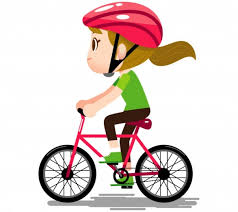
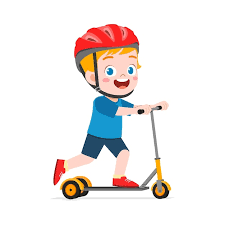
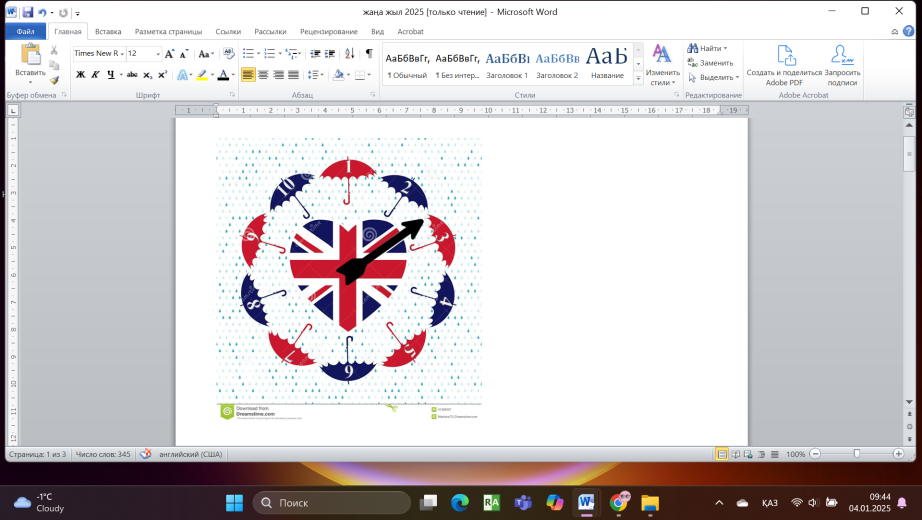


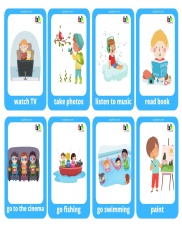
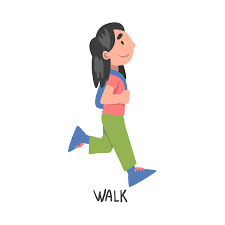

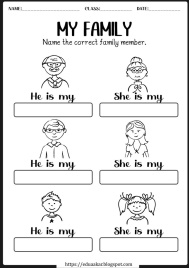


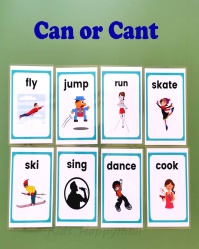


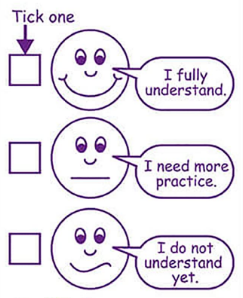
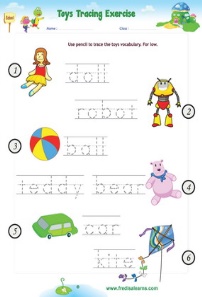 read the
title
read the
title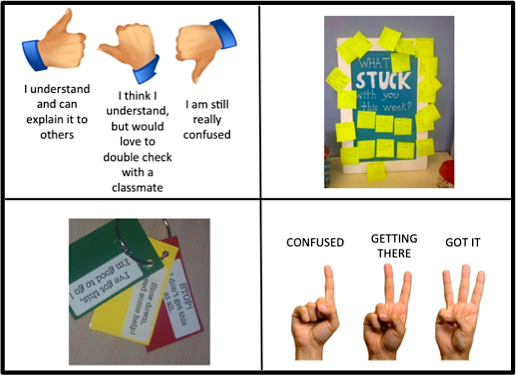
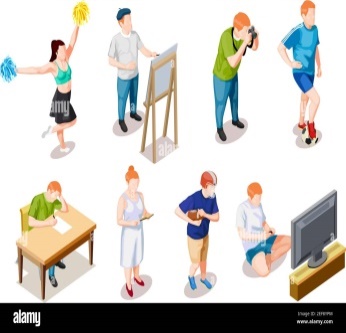
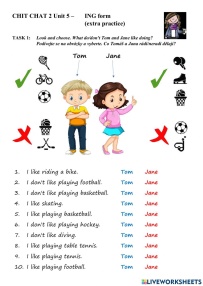
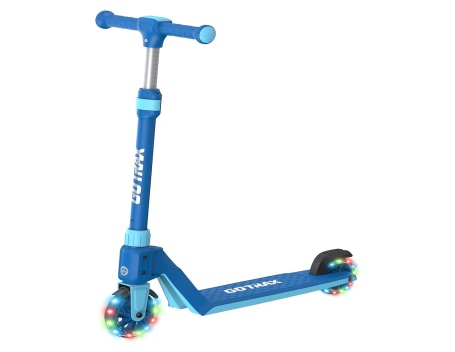
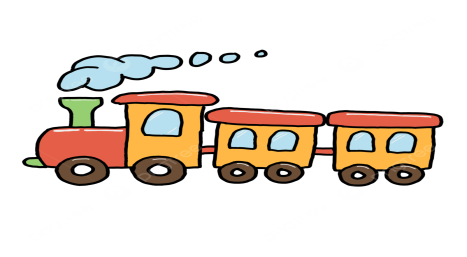 ead the questions
aloud. Invite
pupils to answer them.
ead the questions
aloud. Invite
pupils to answer them.

